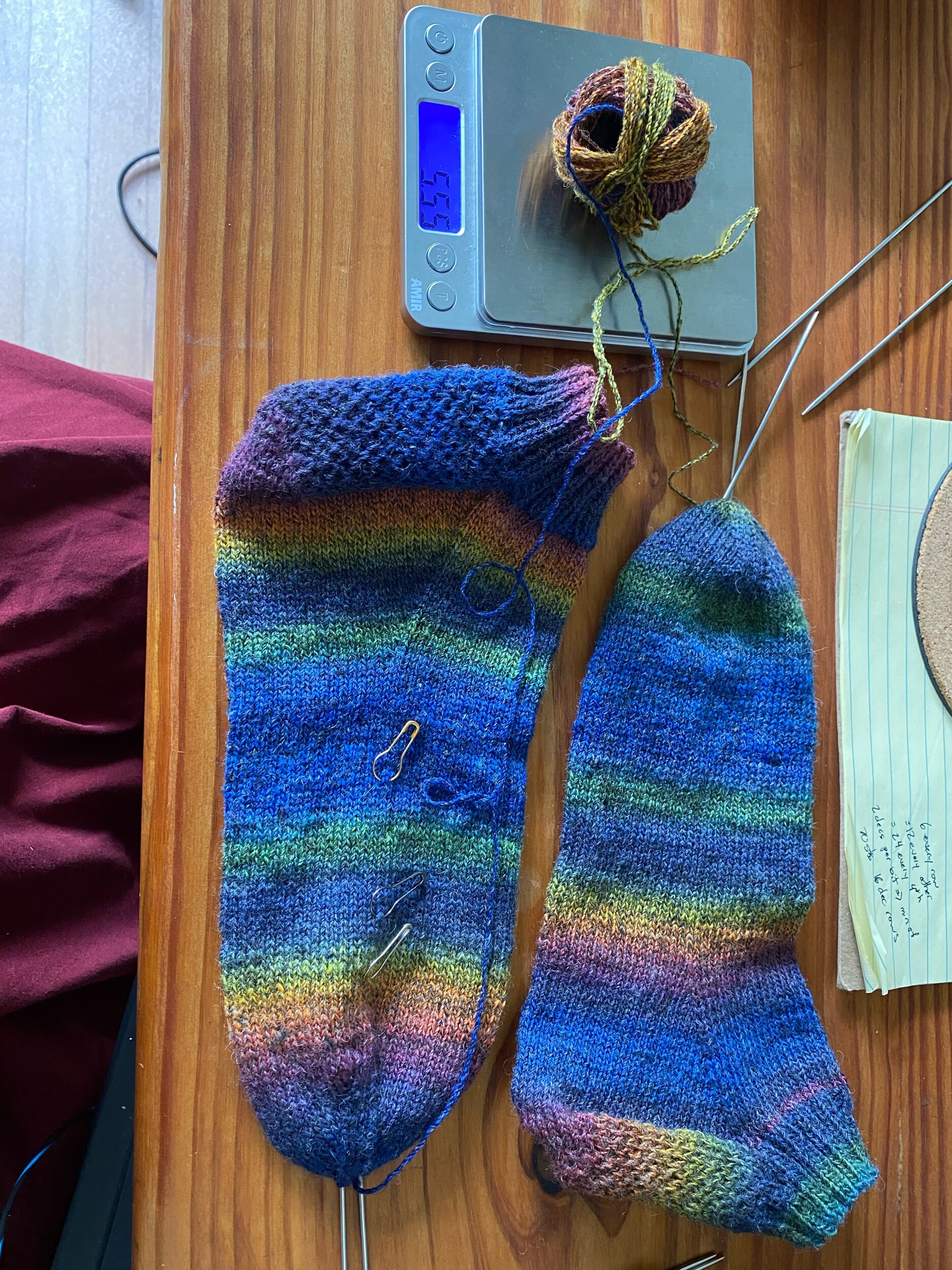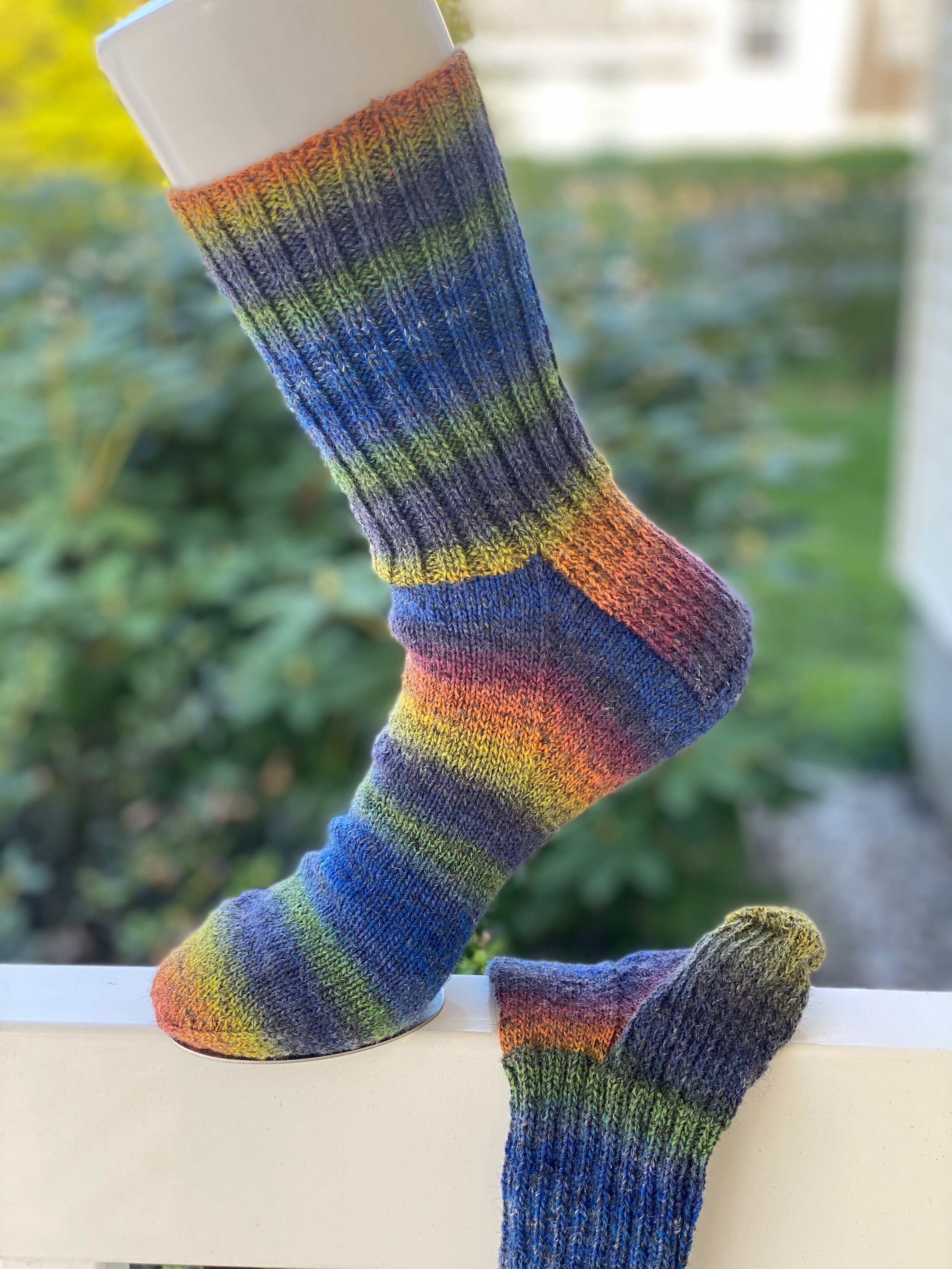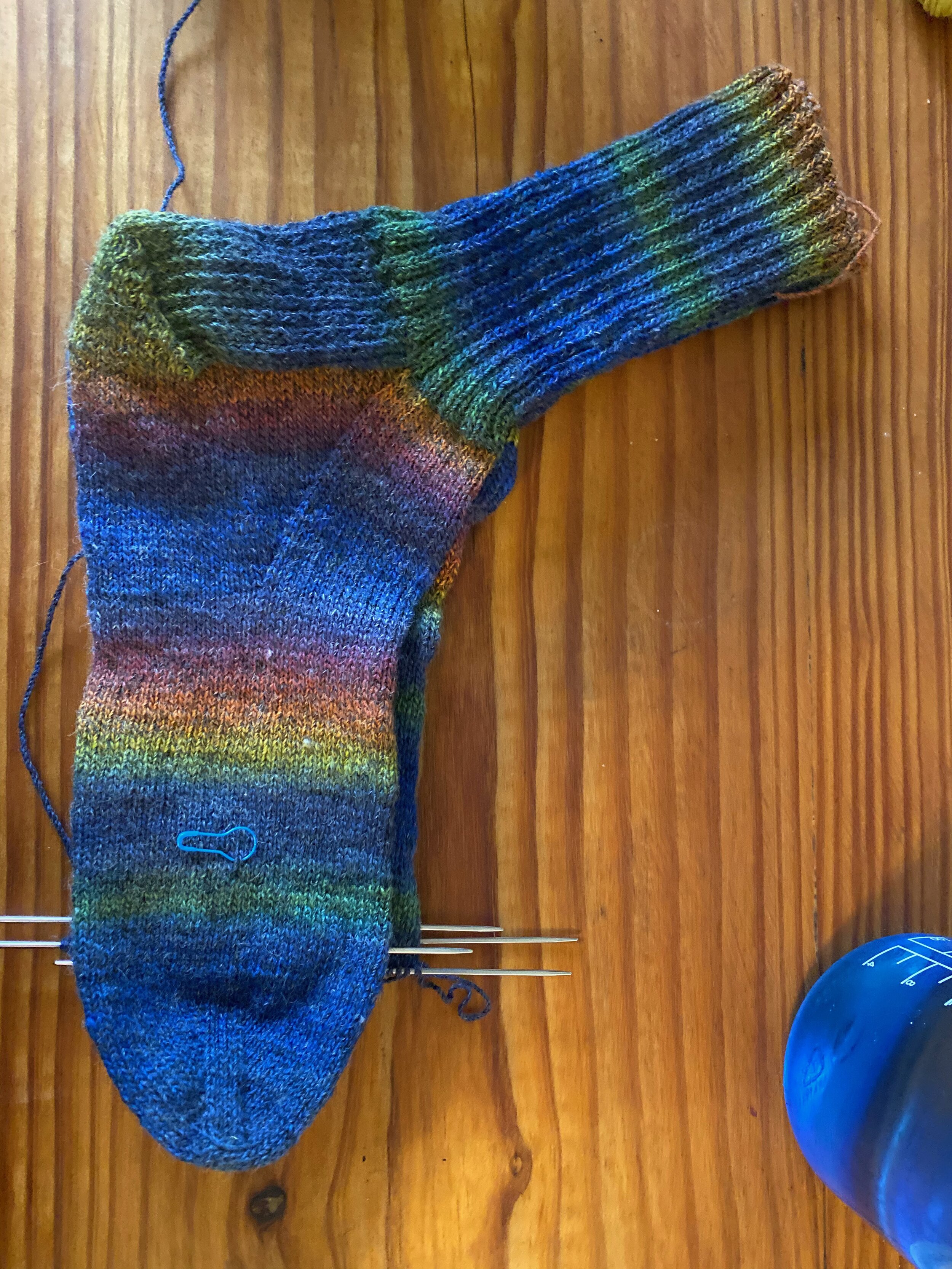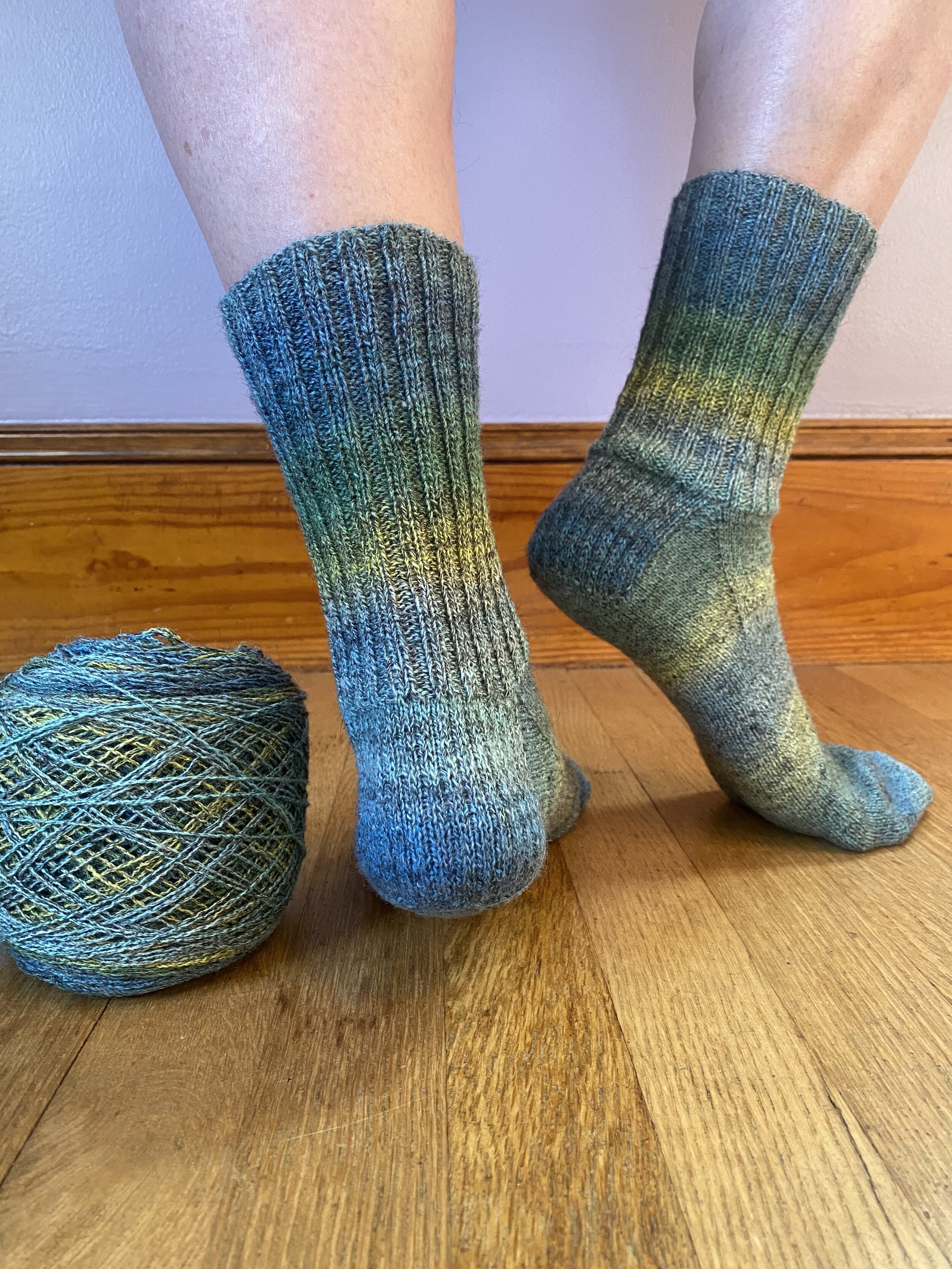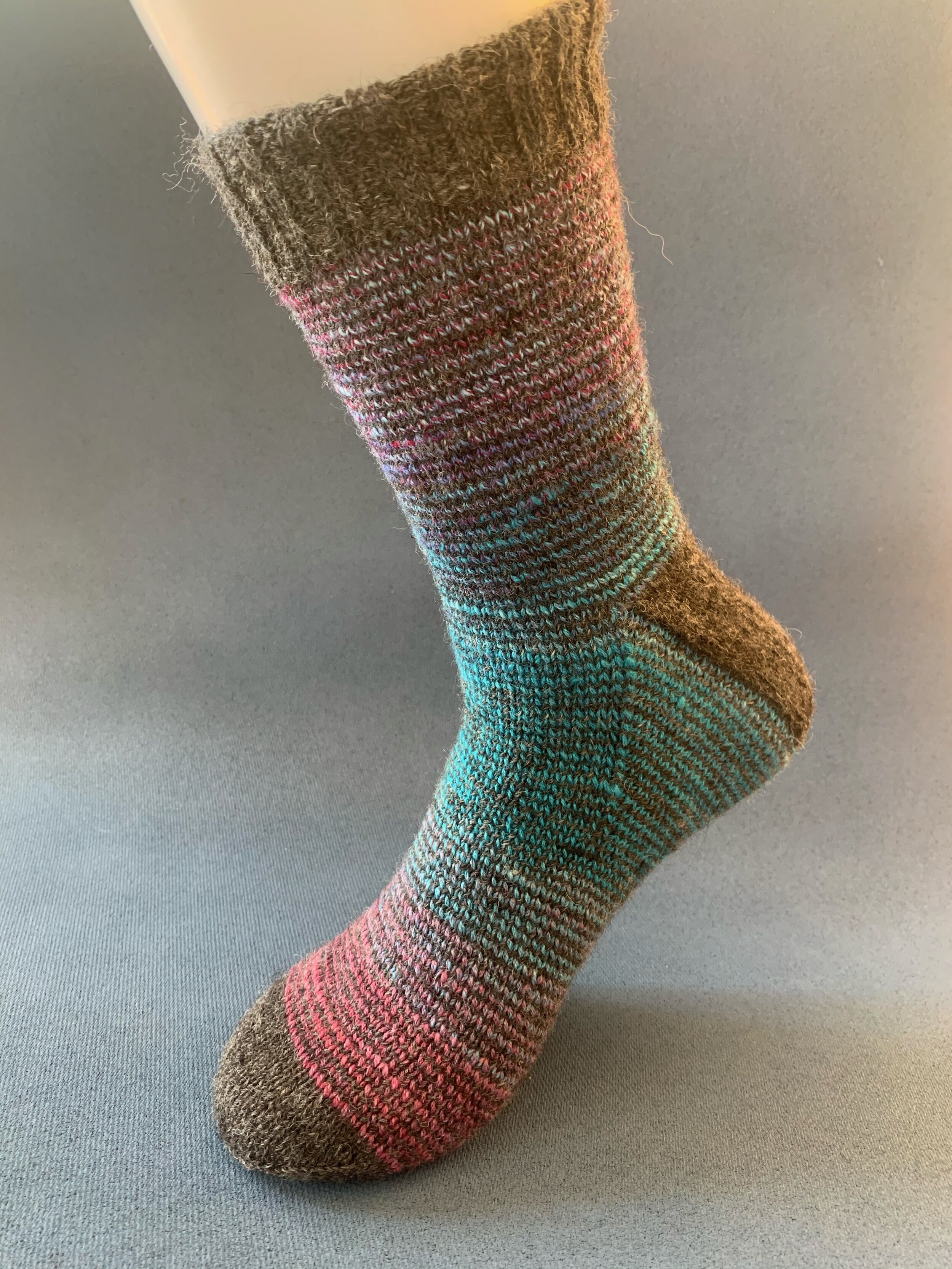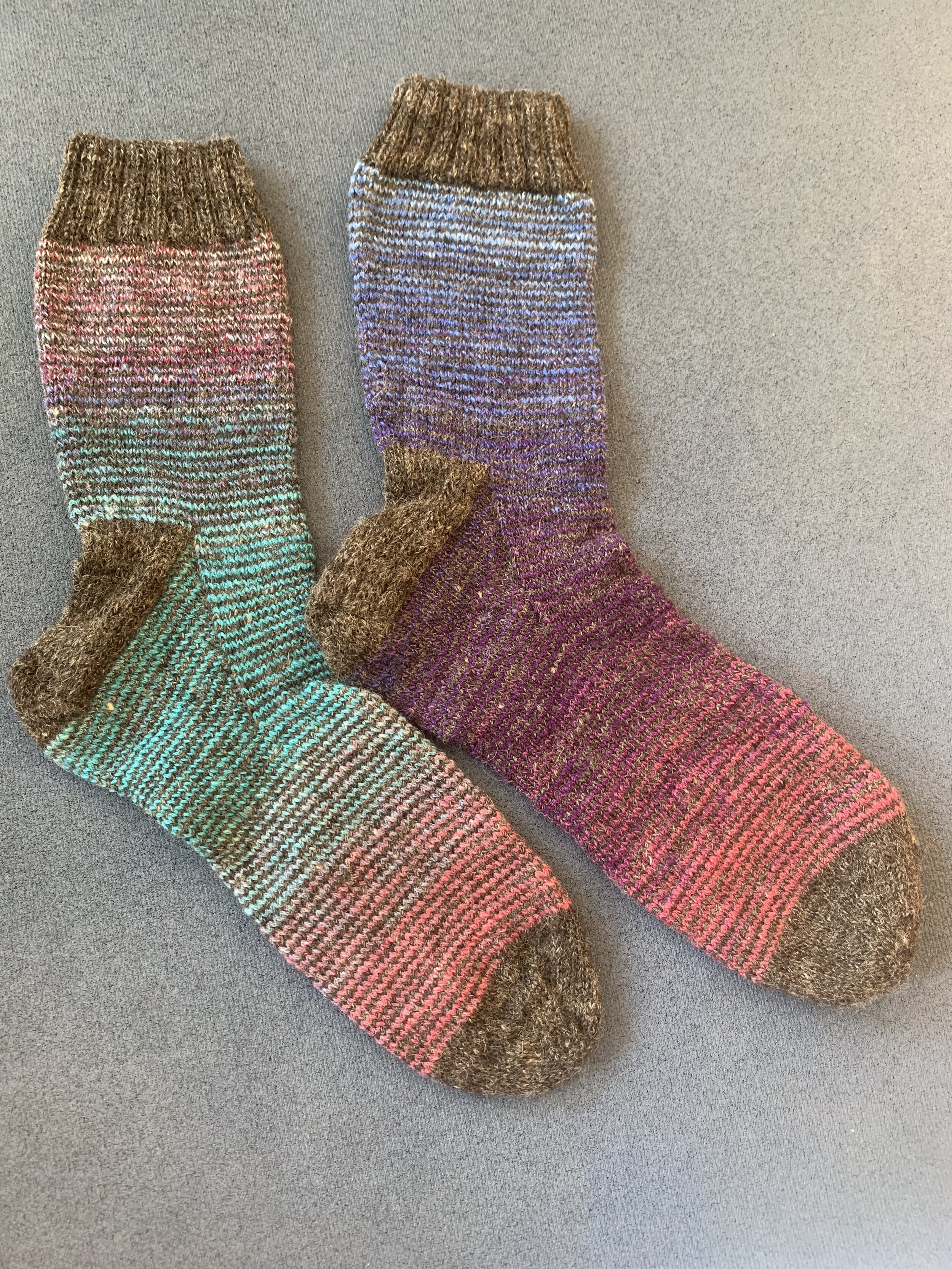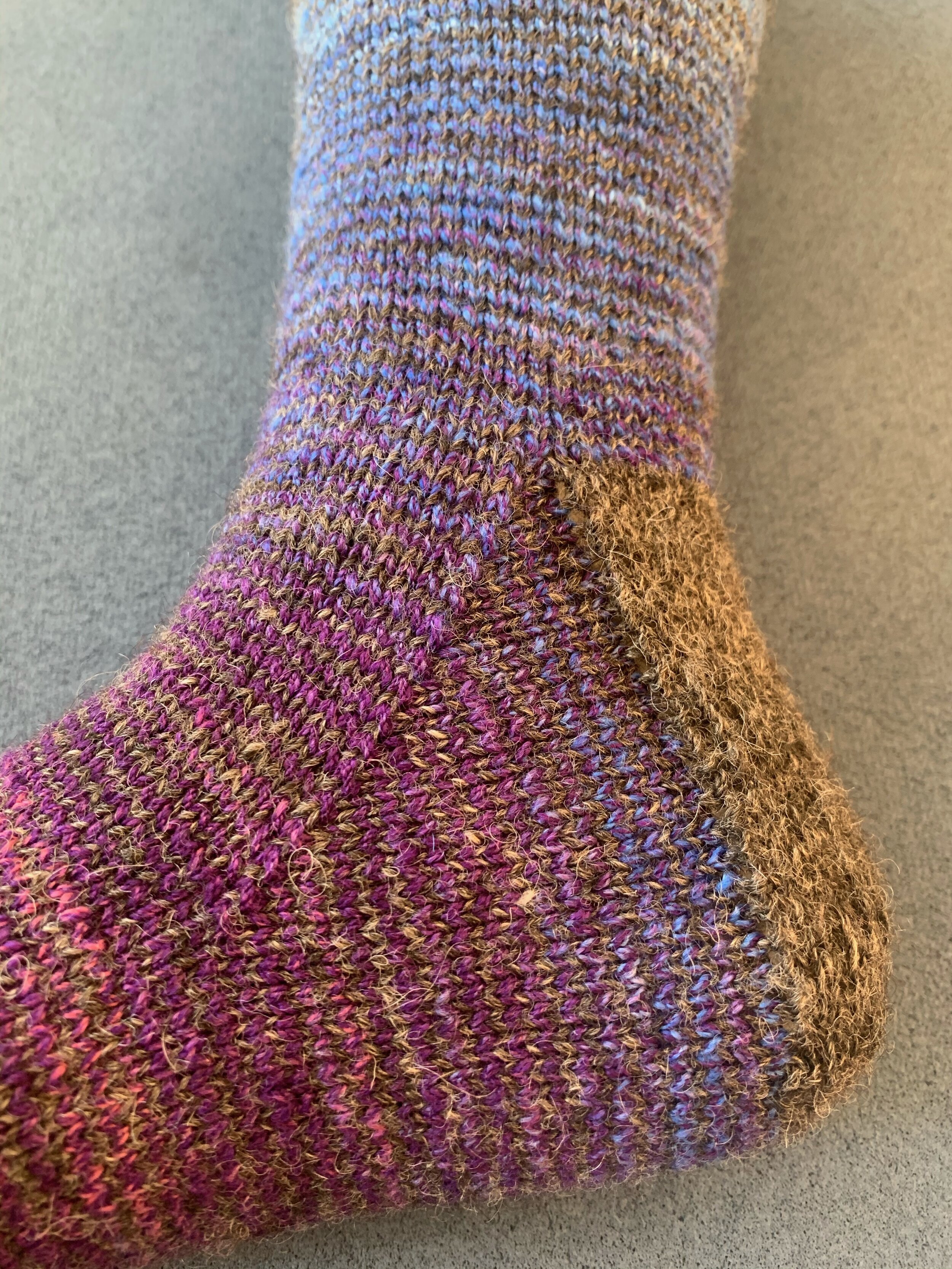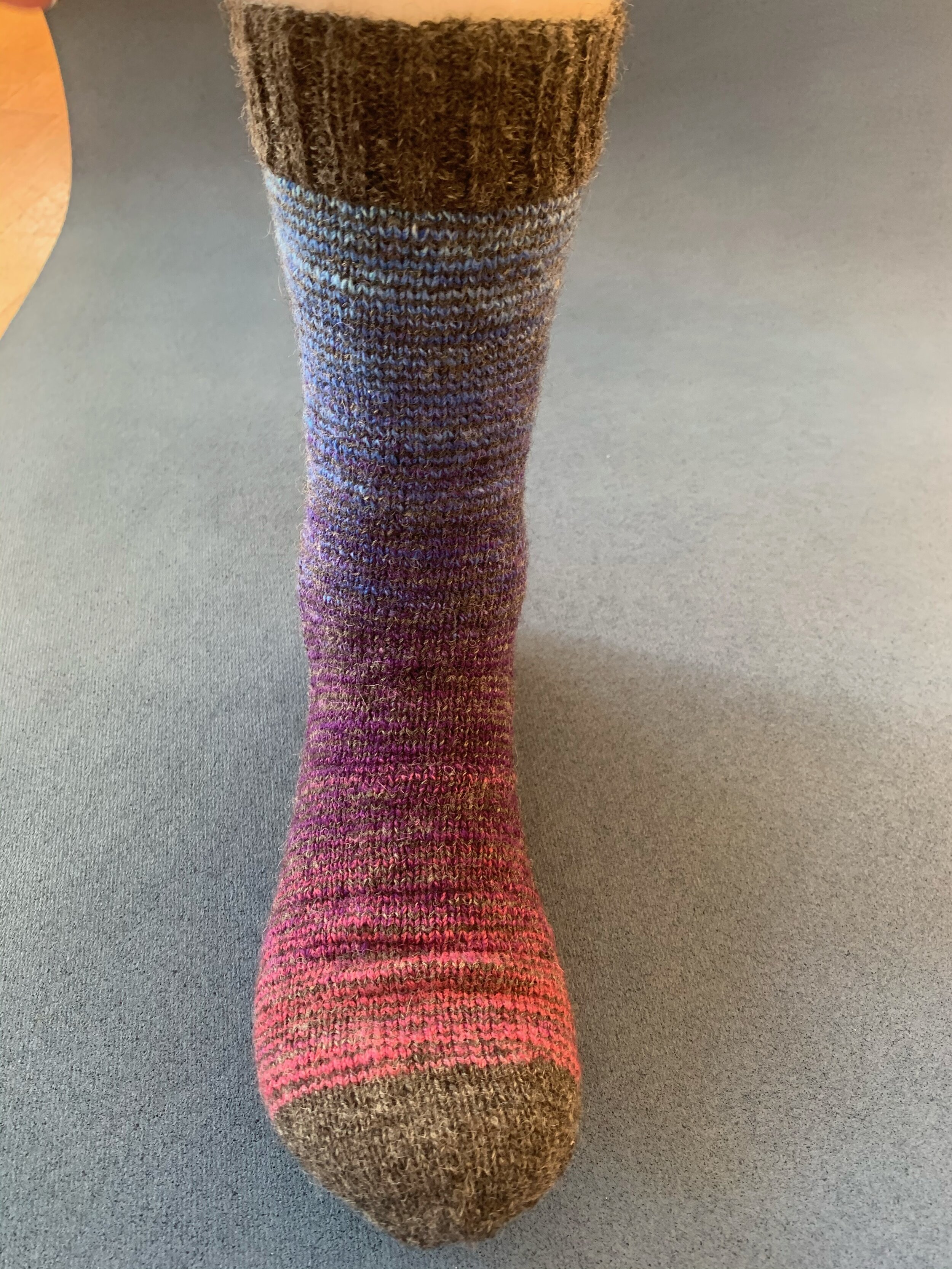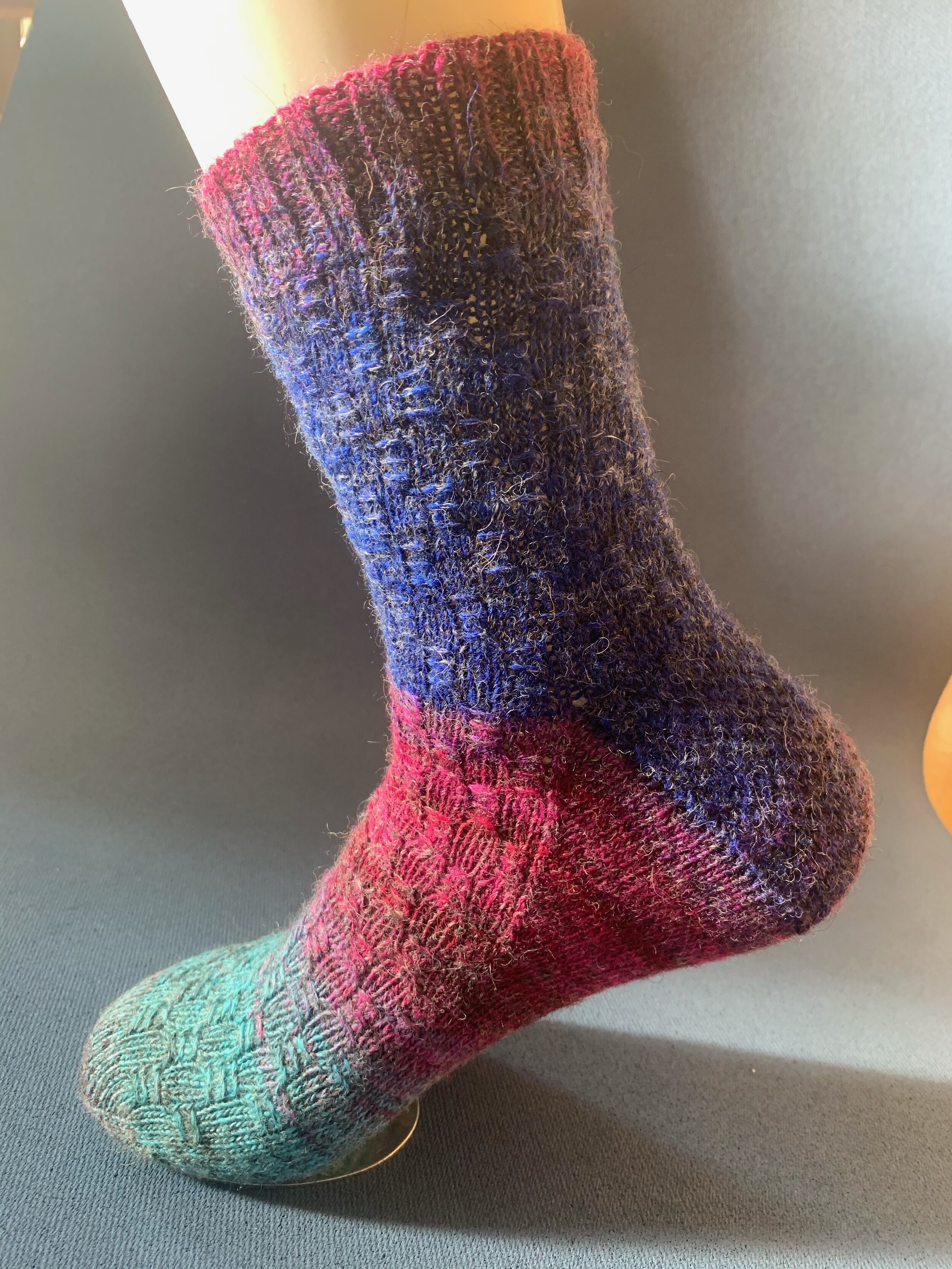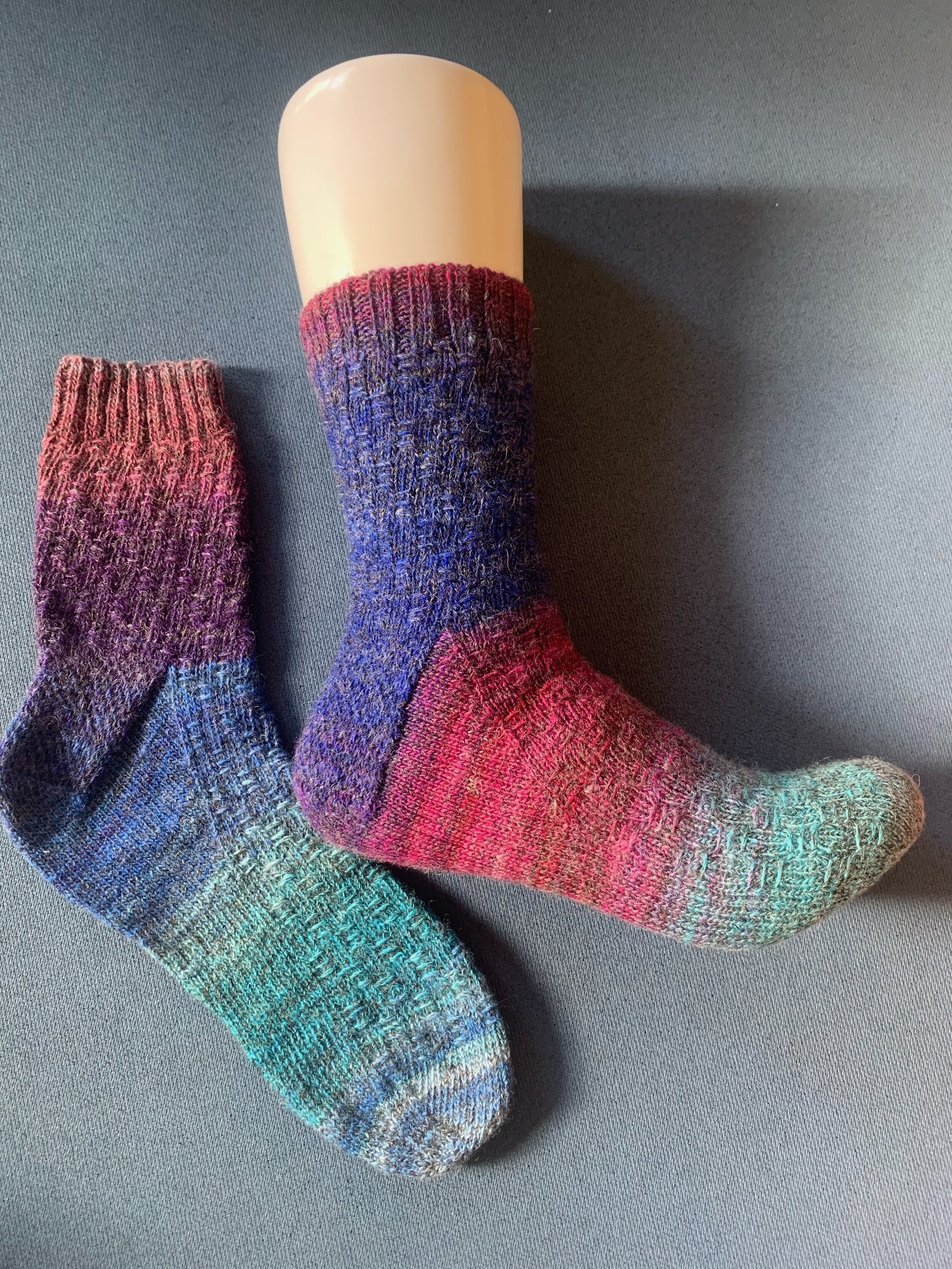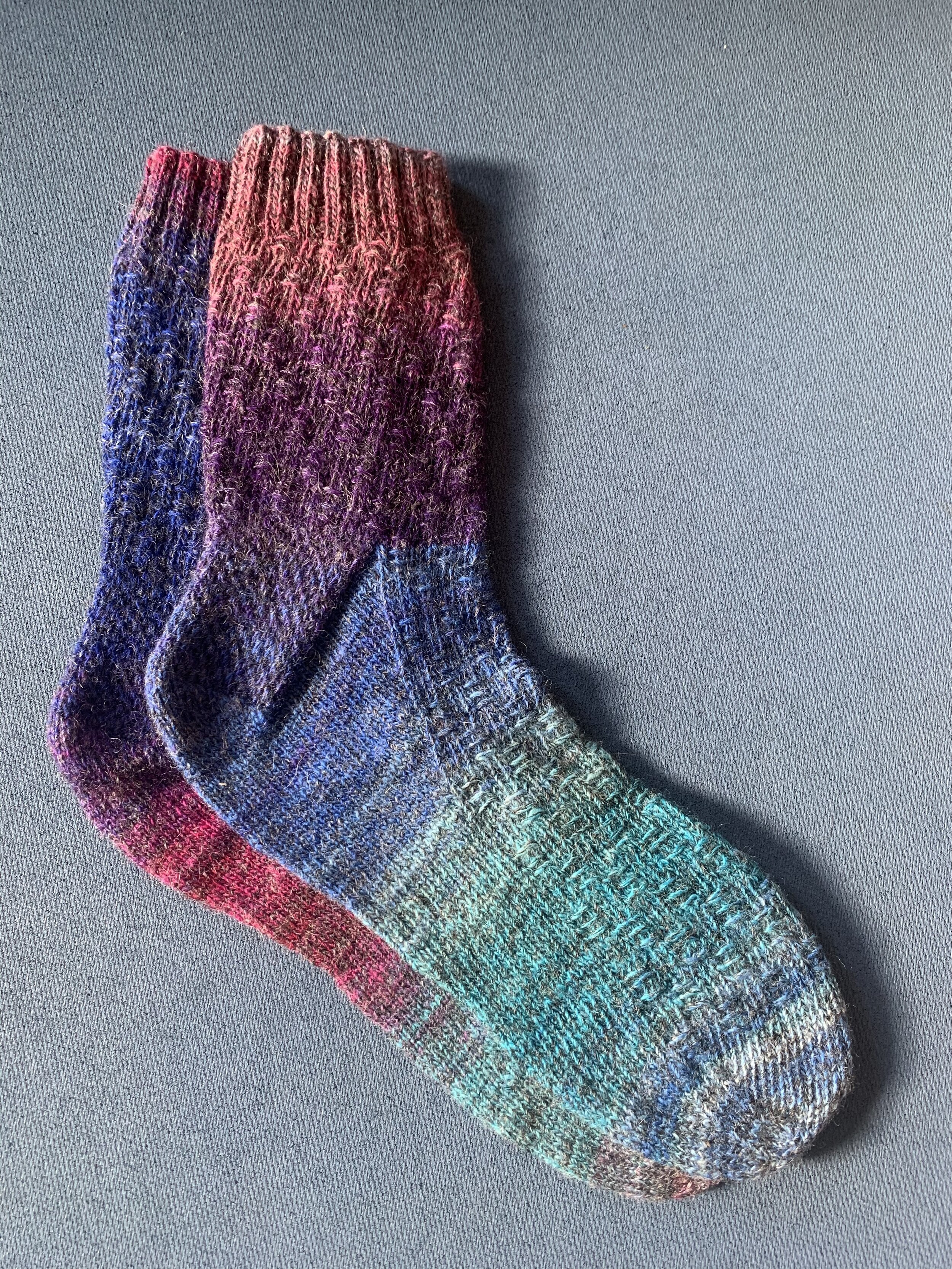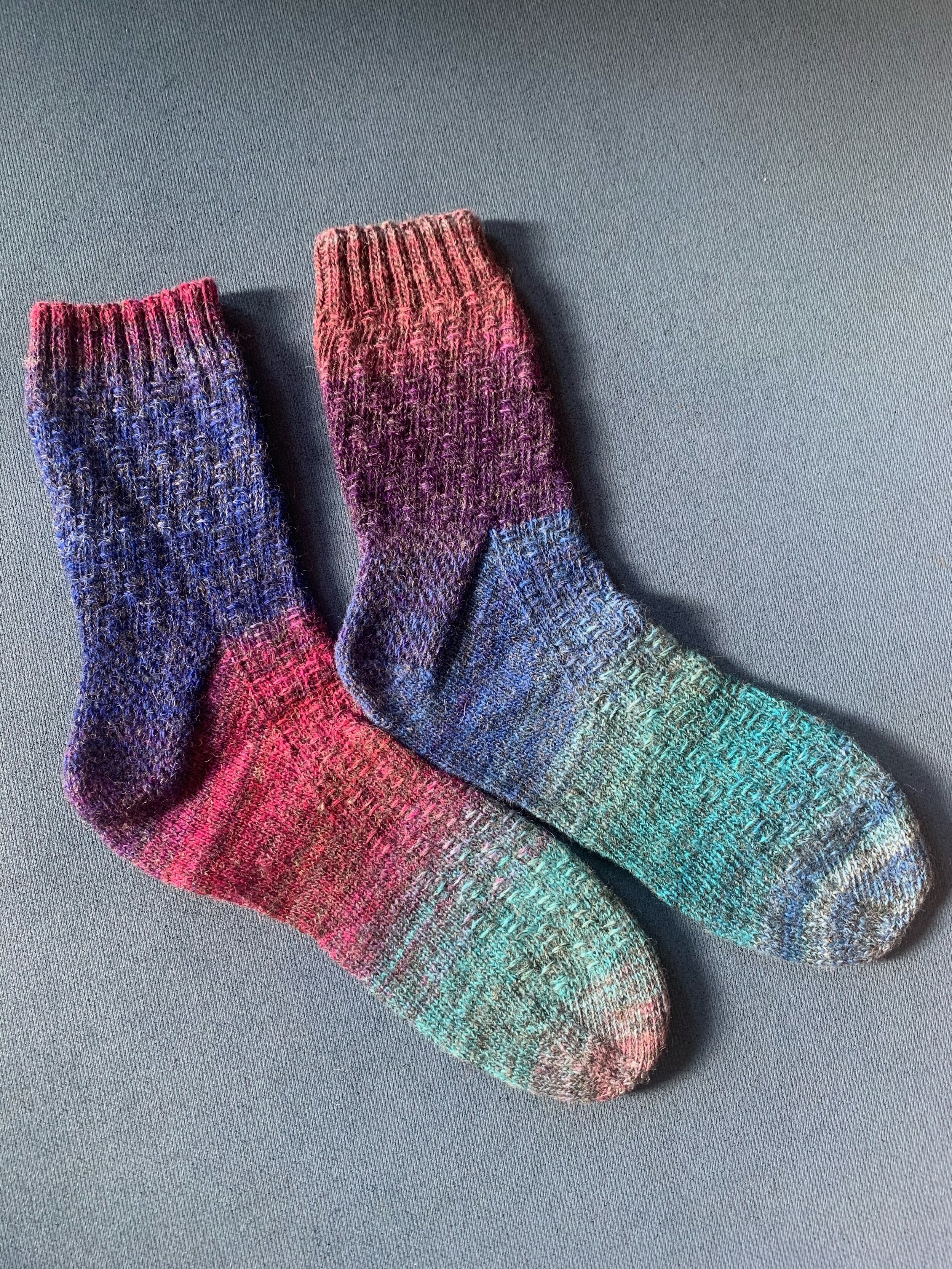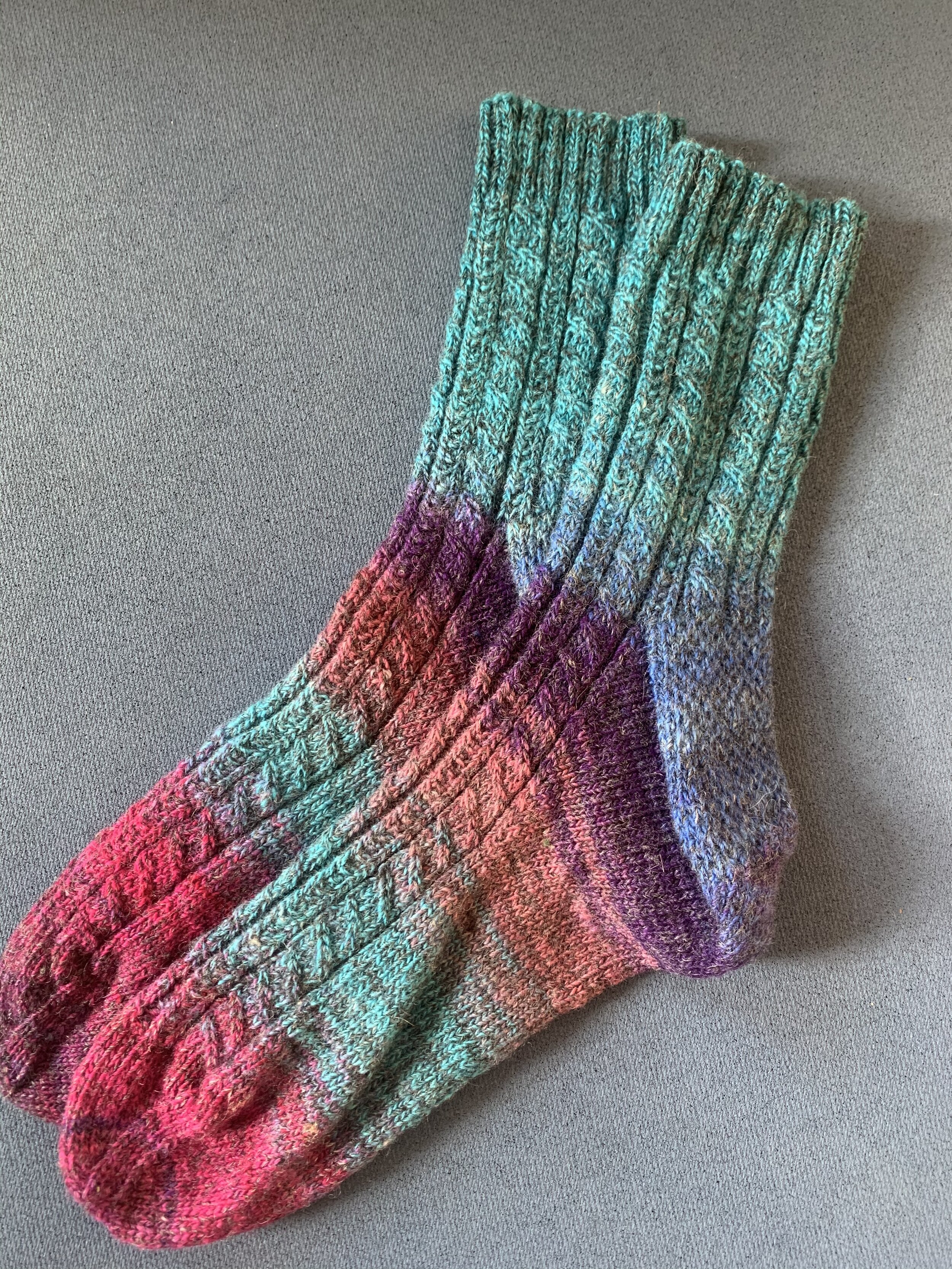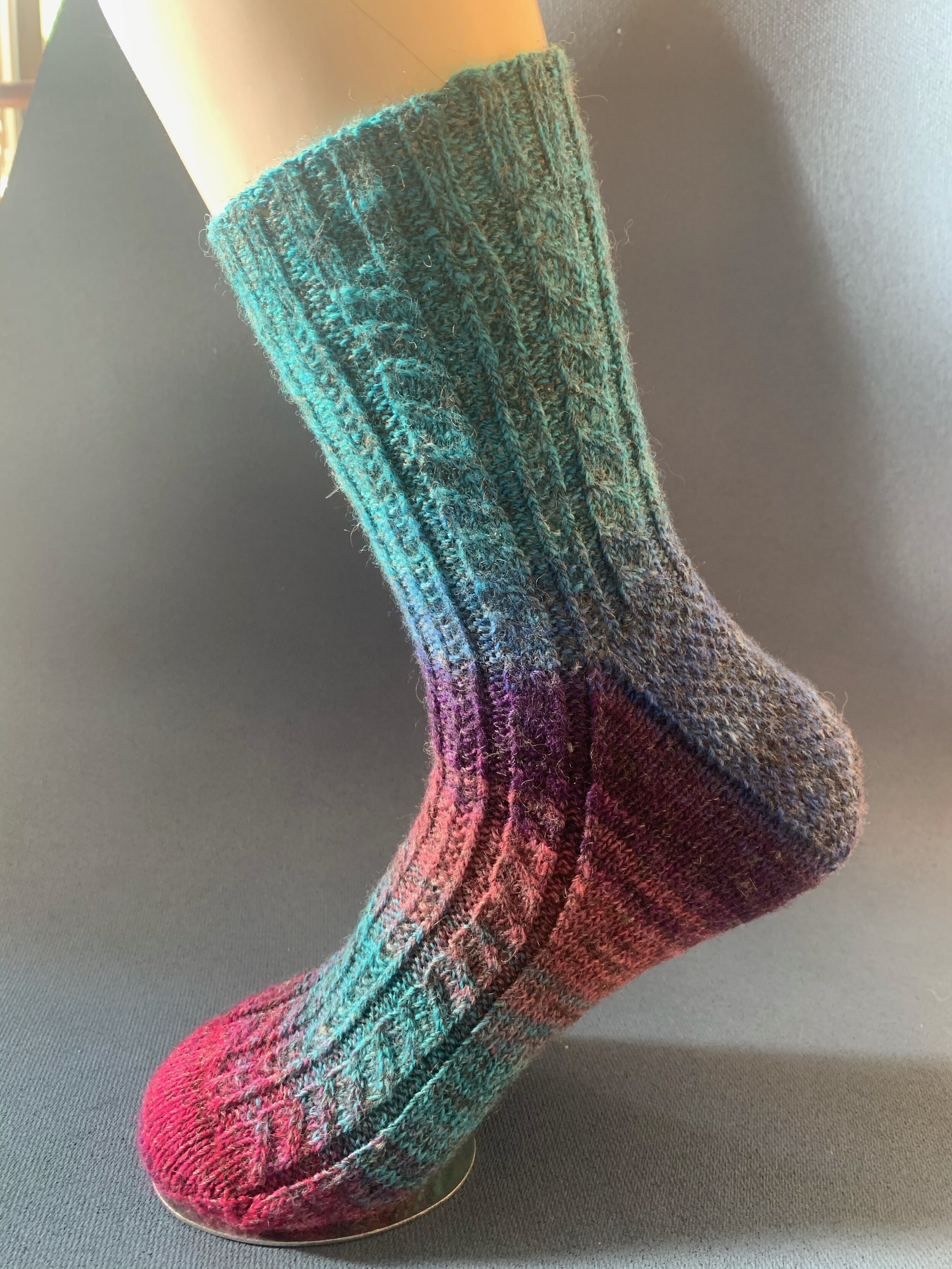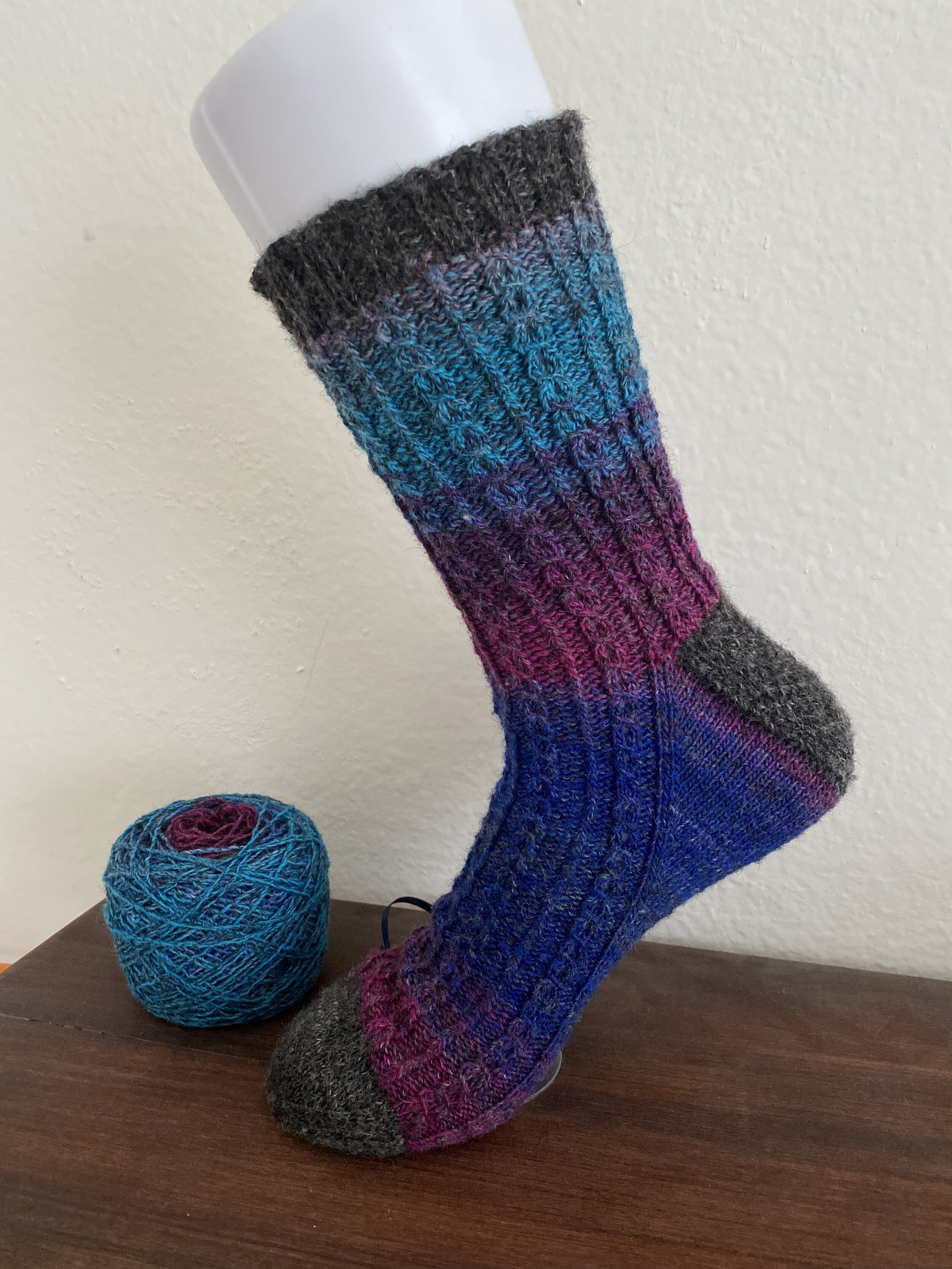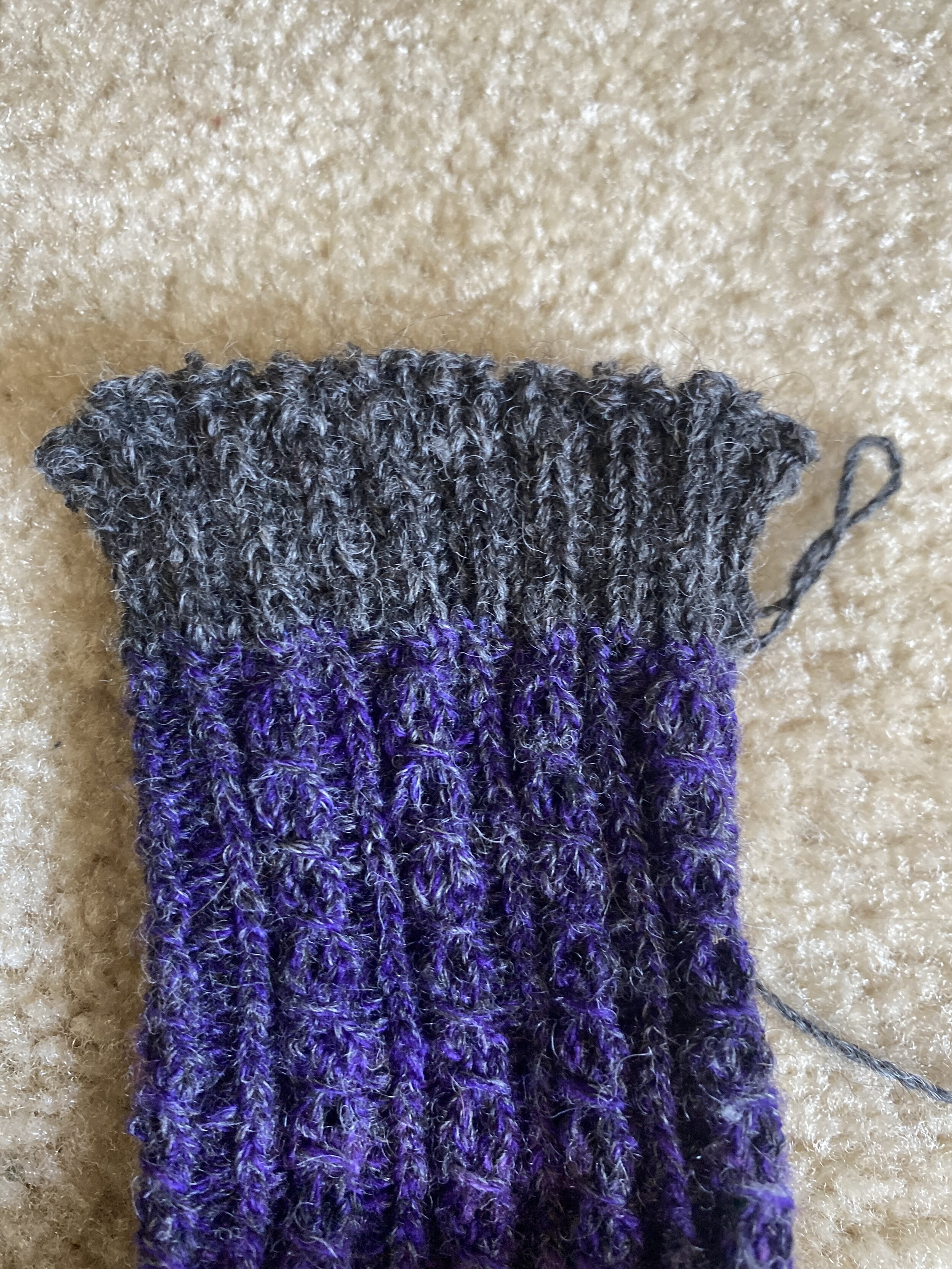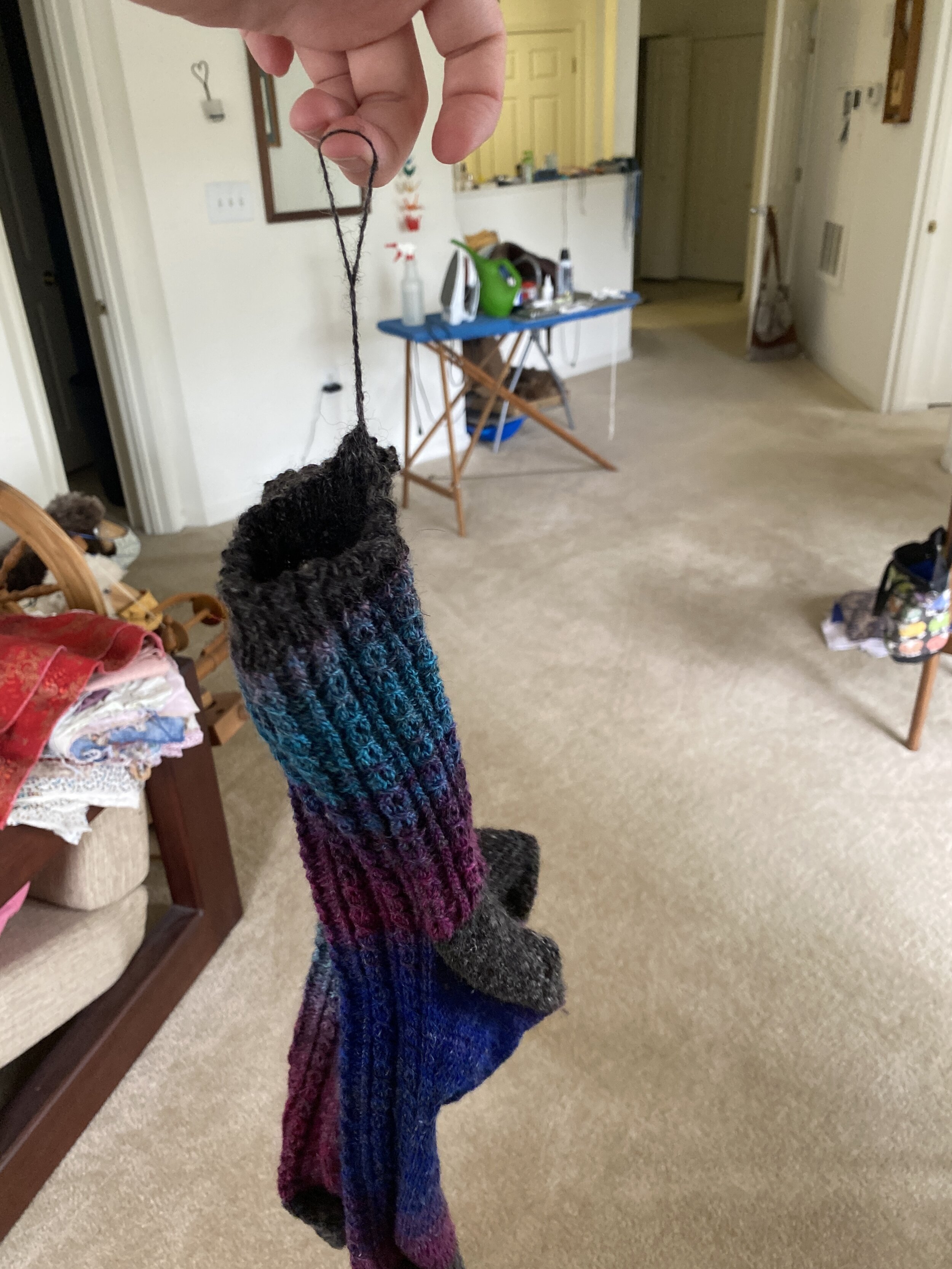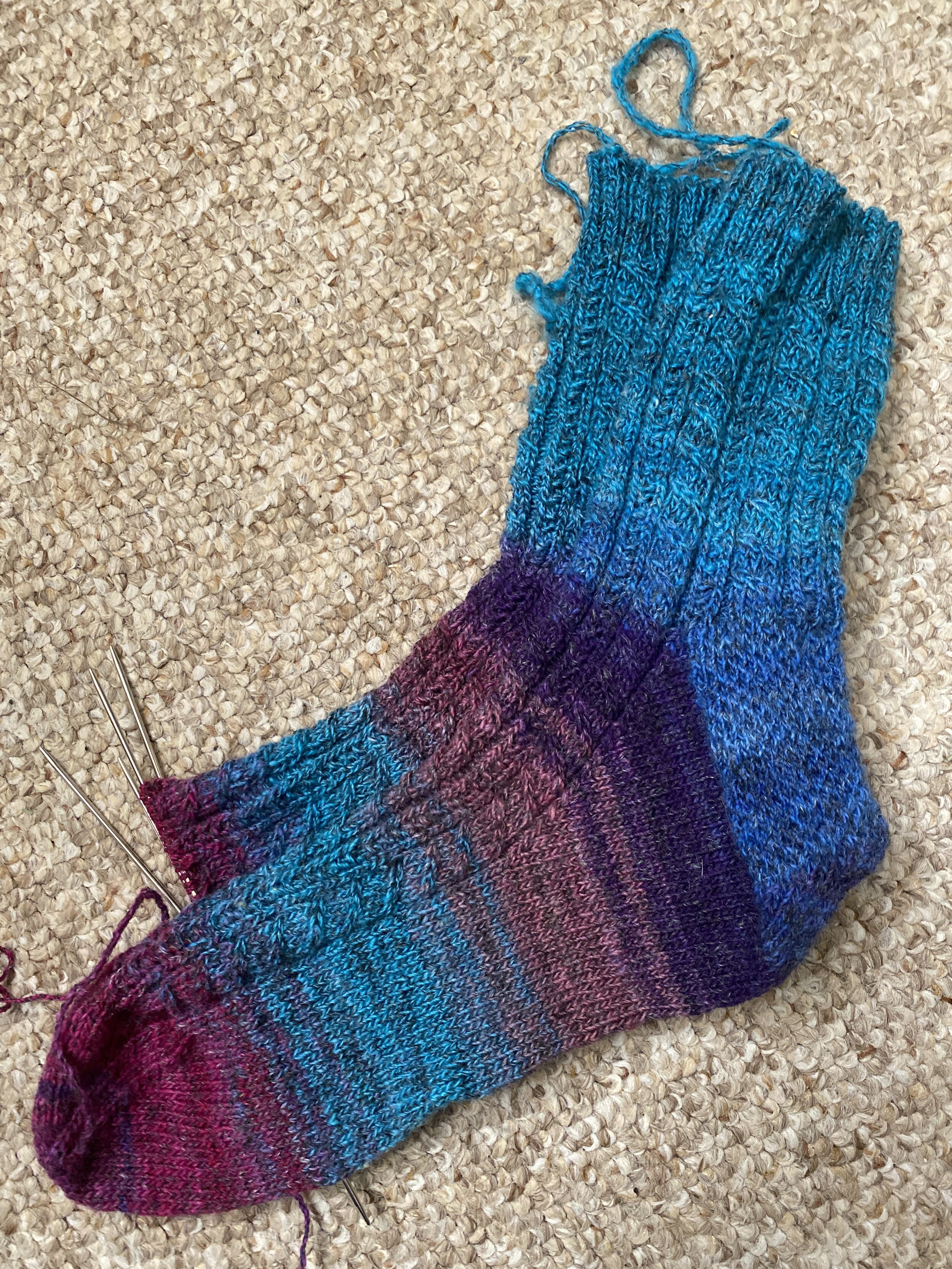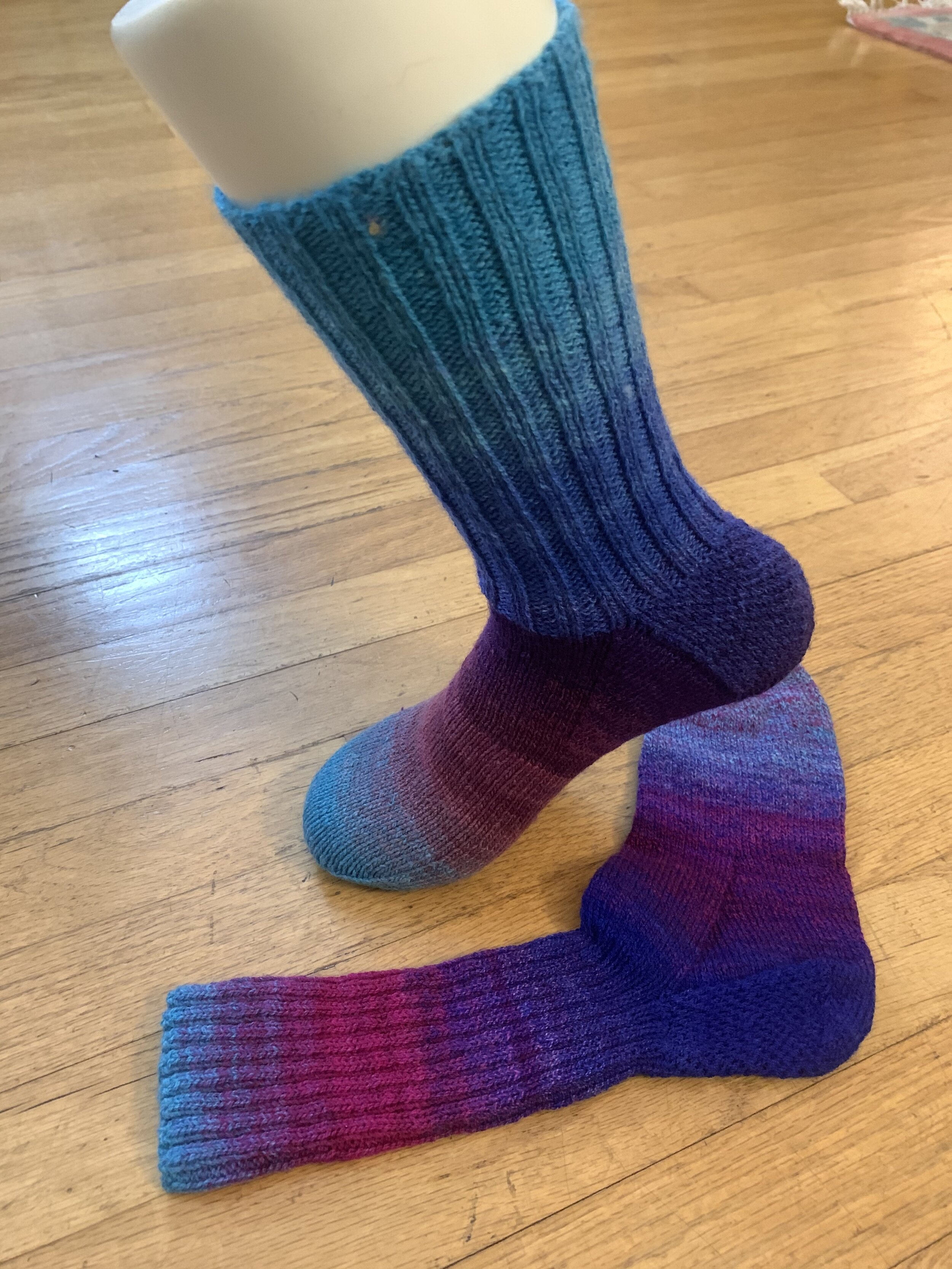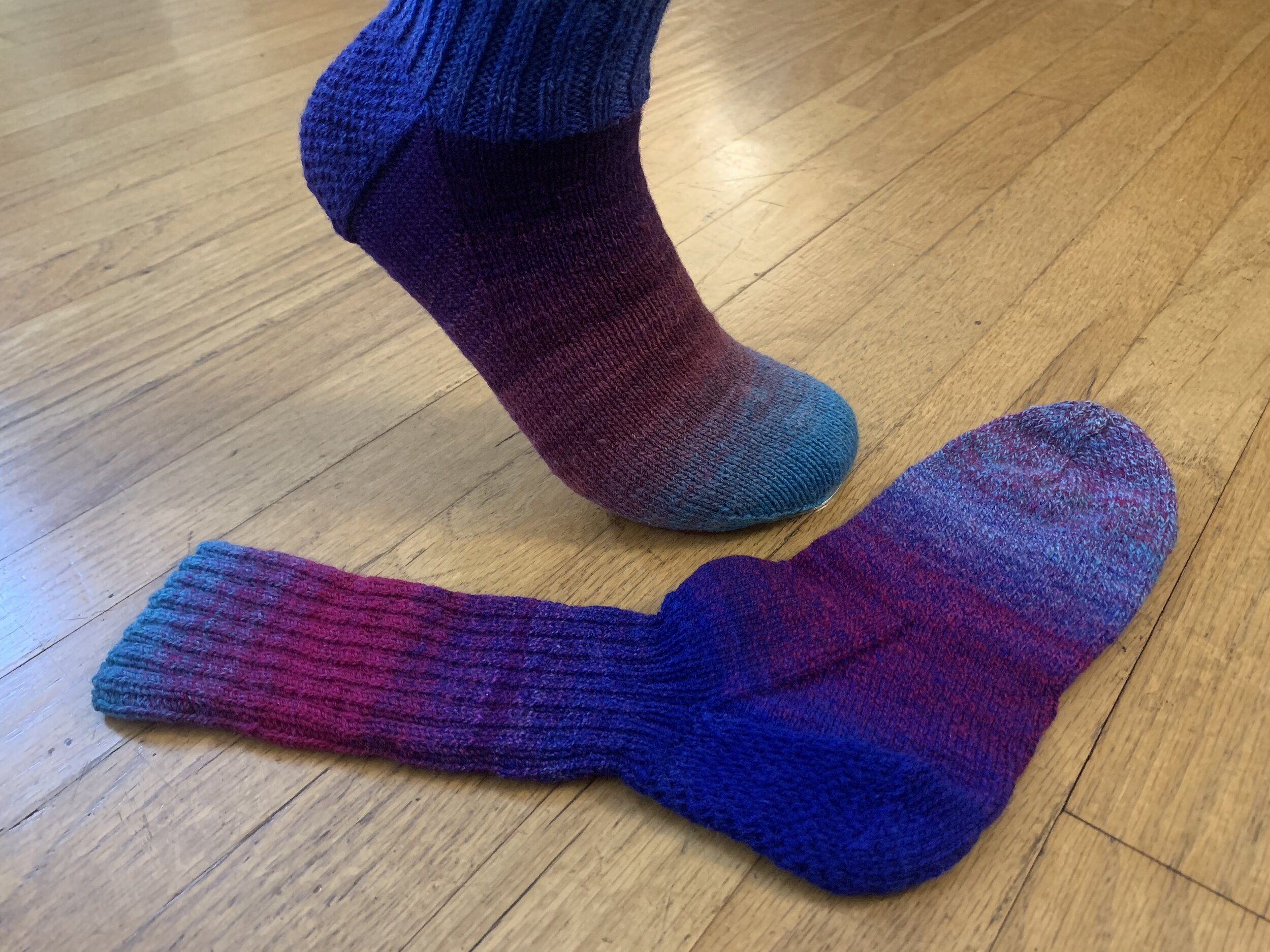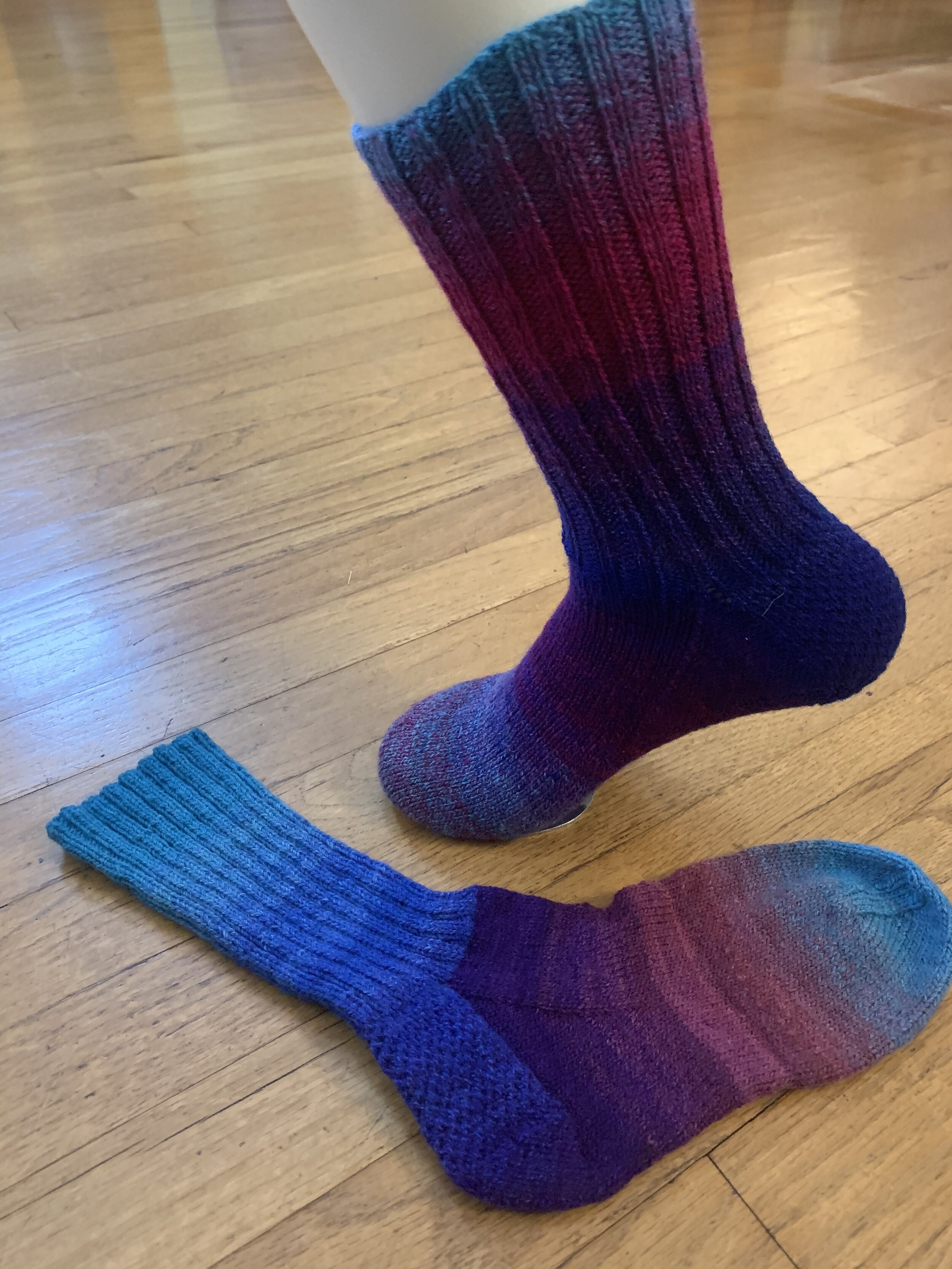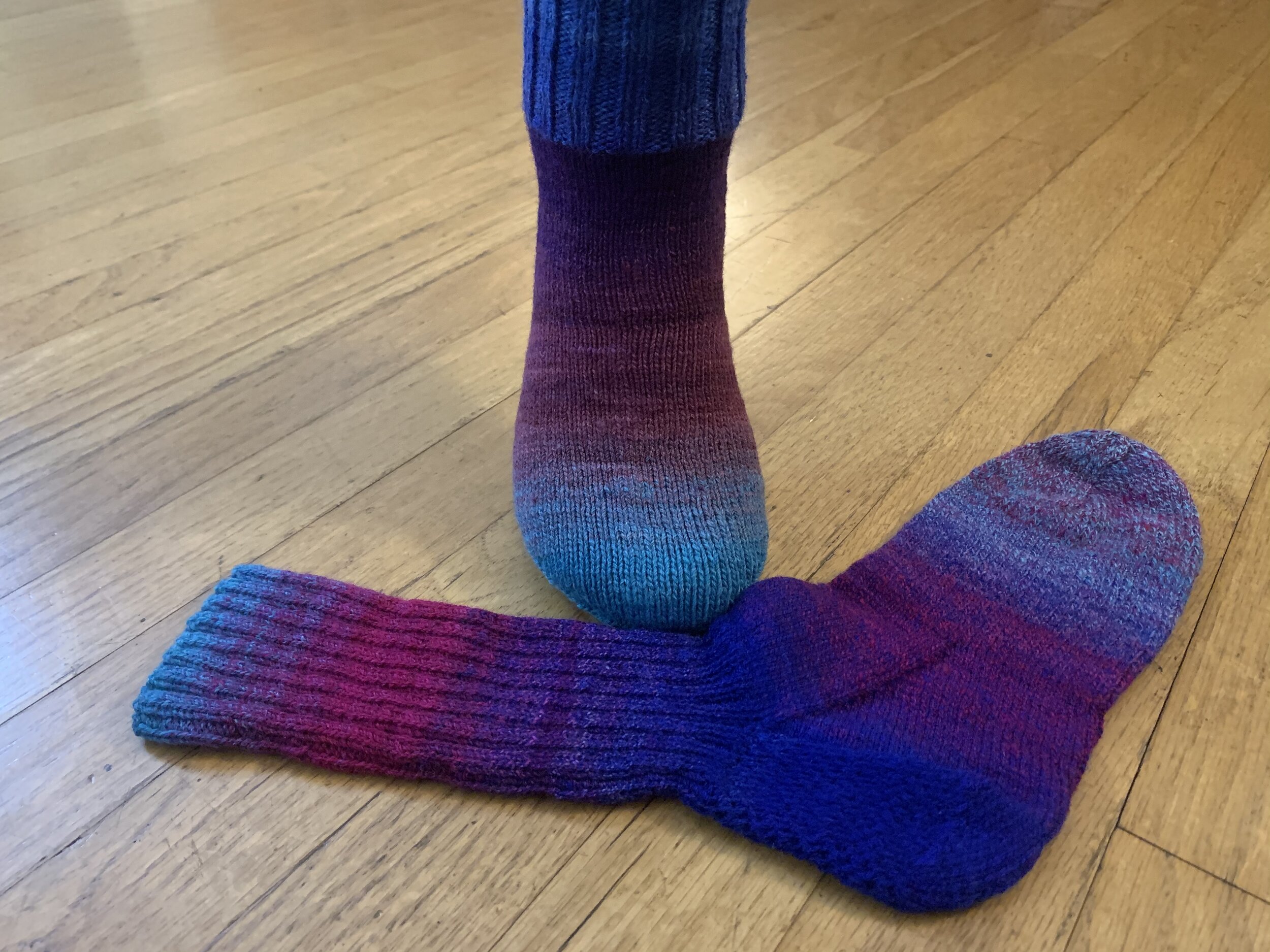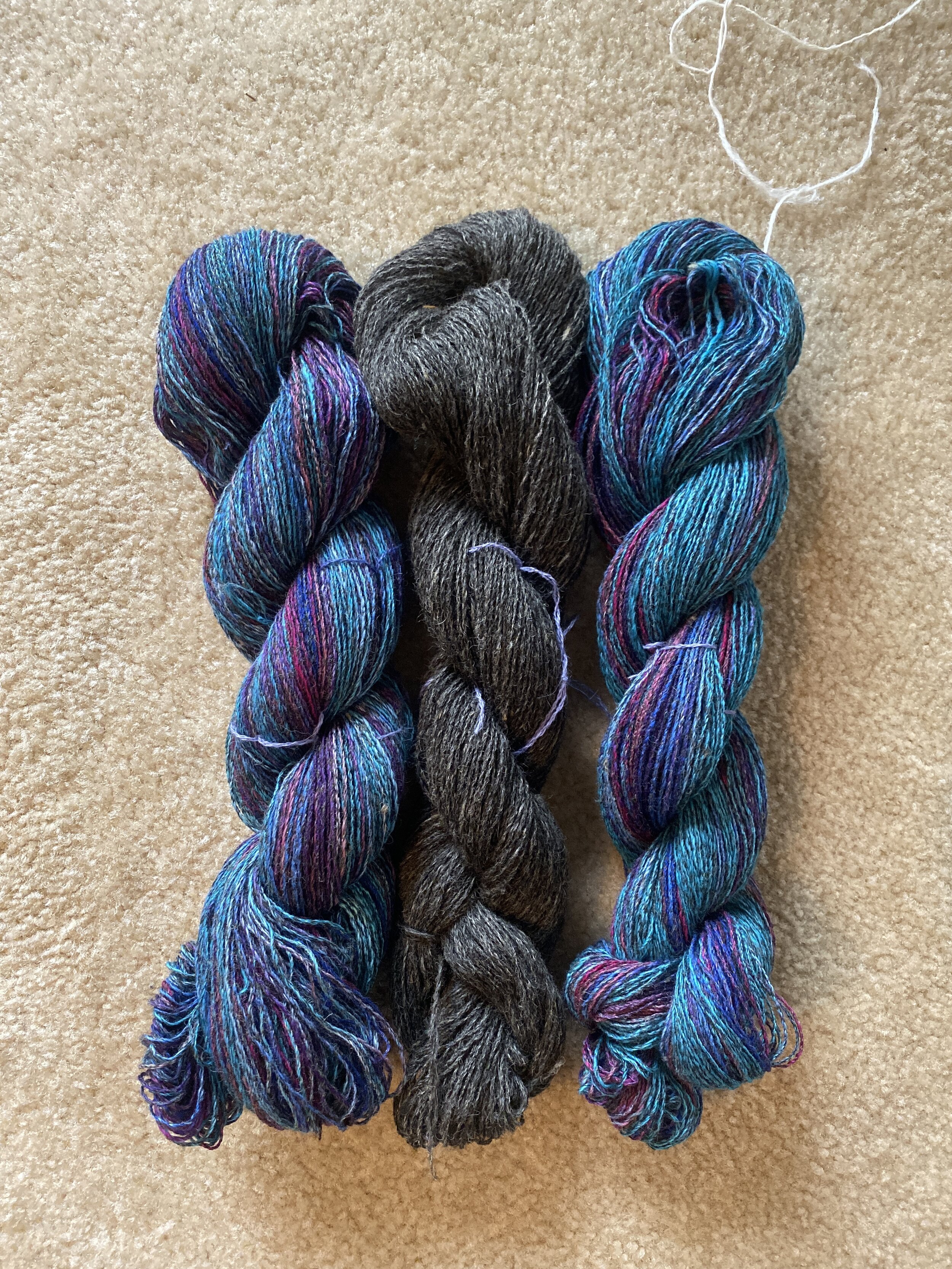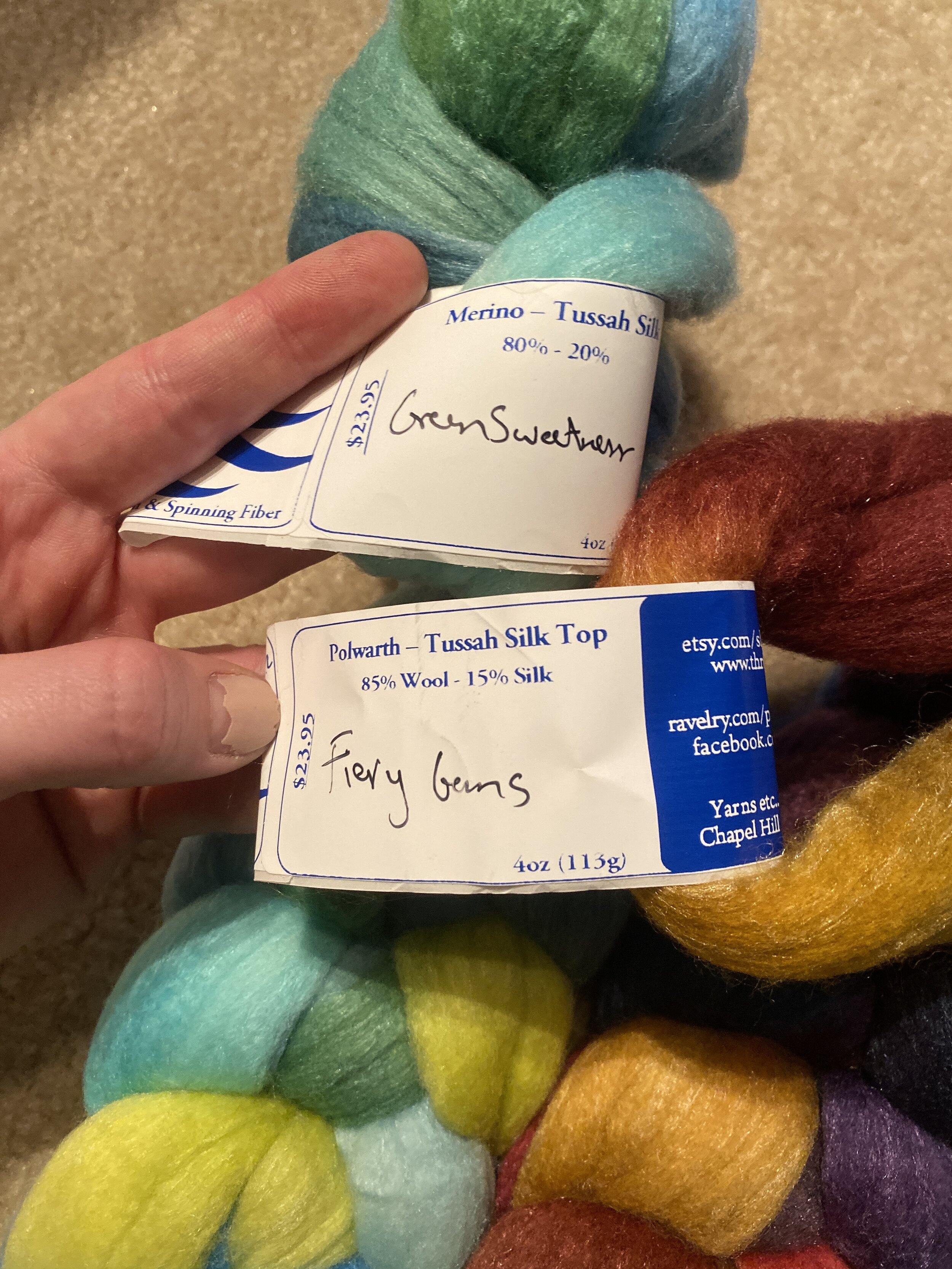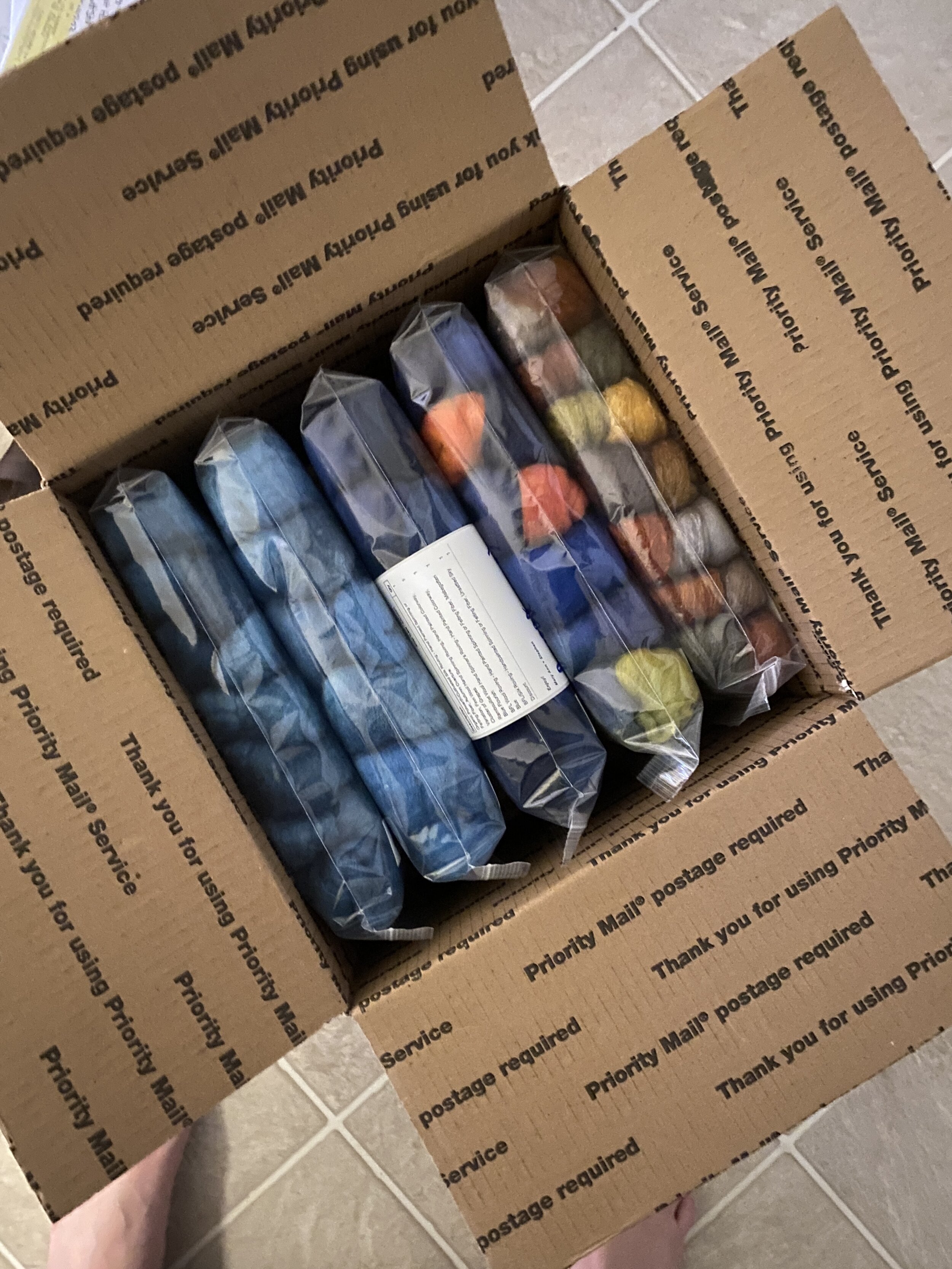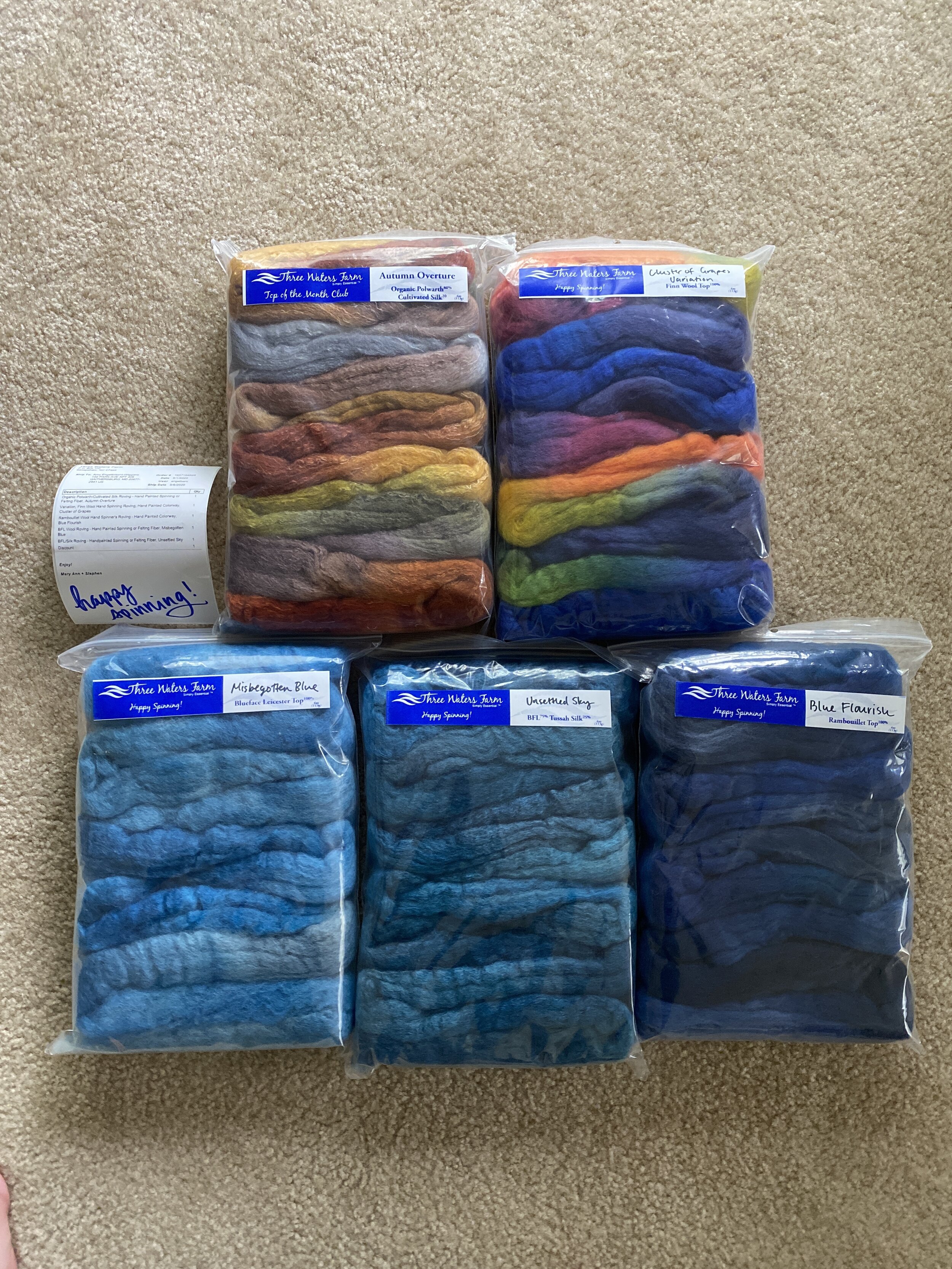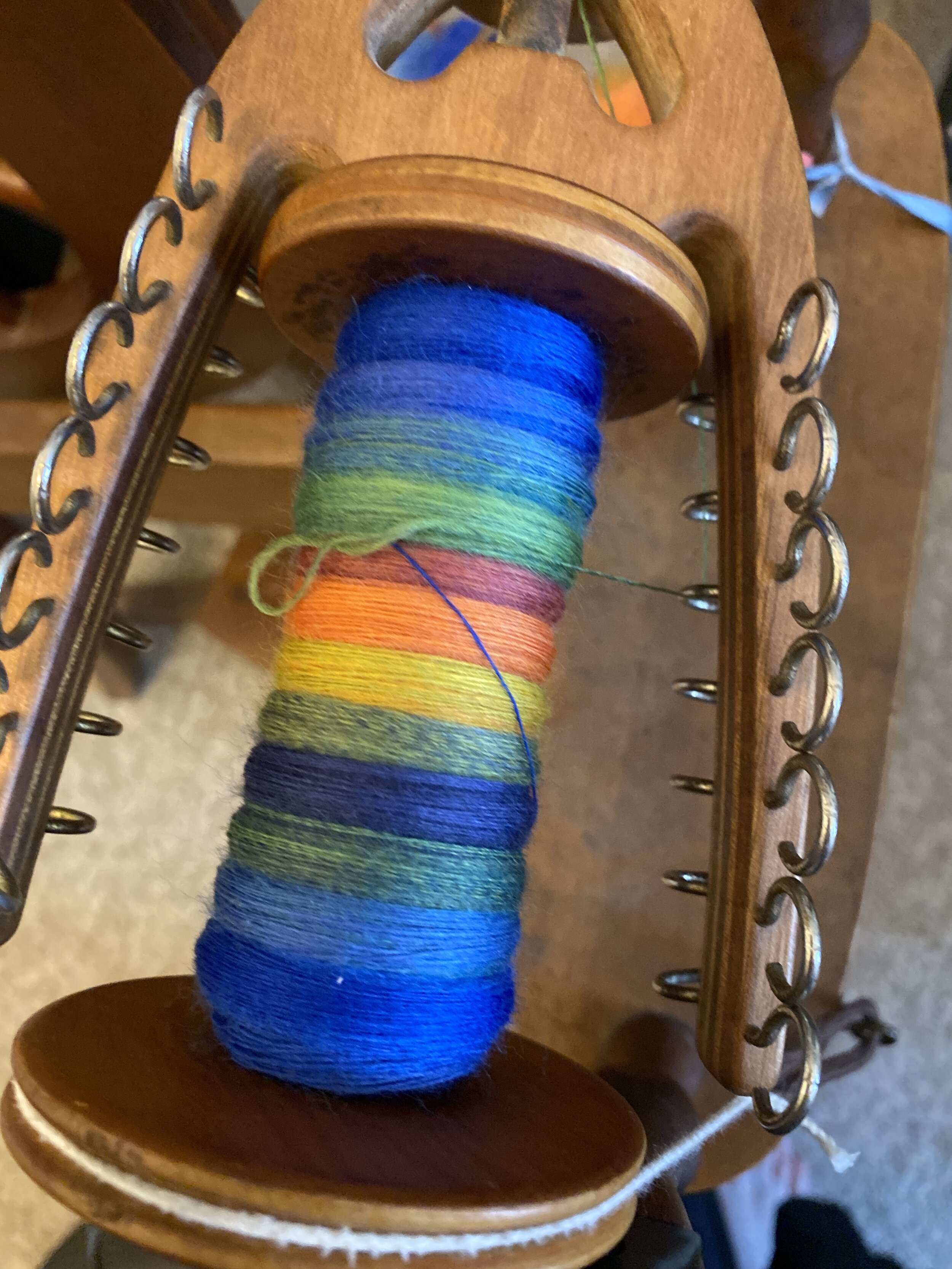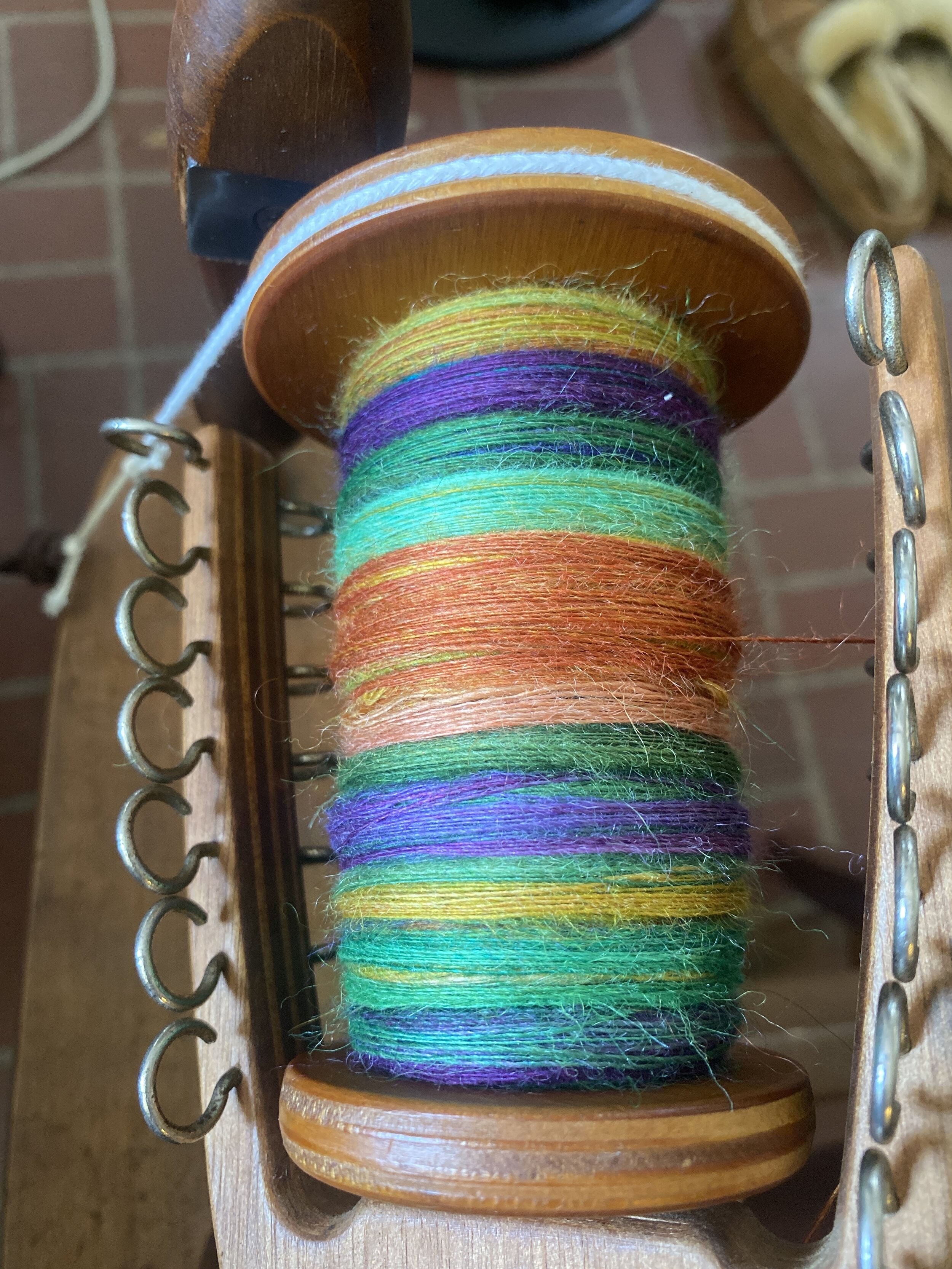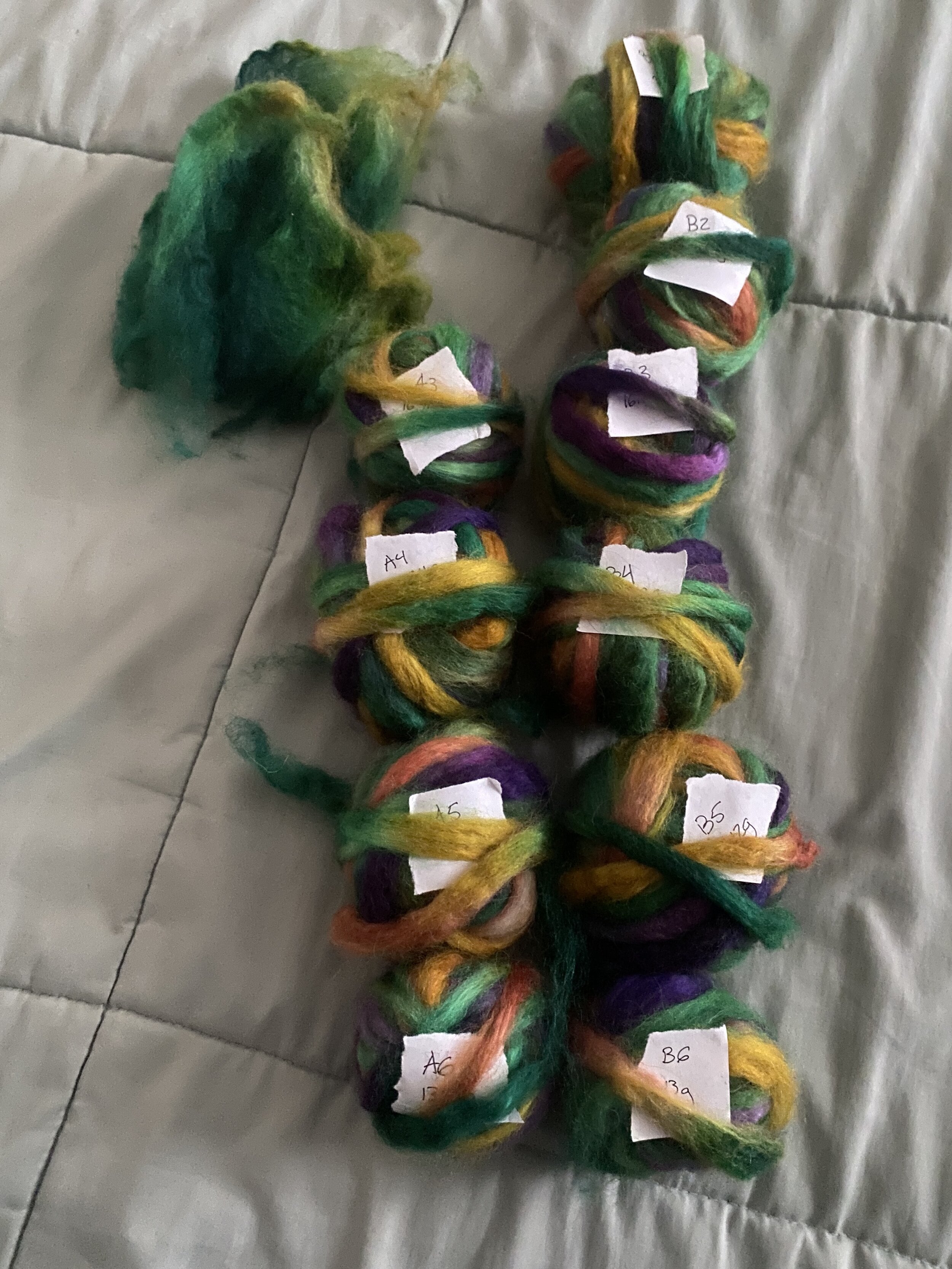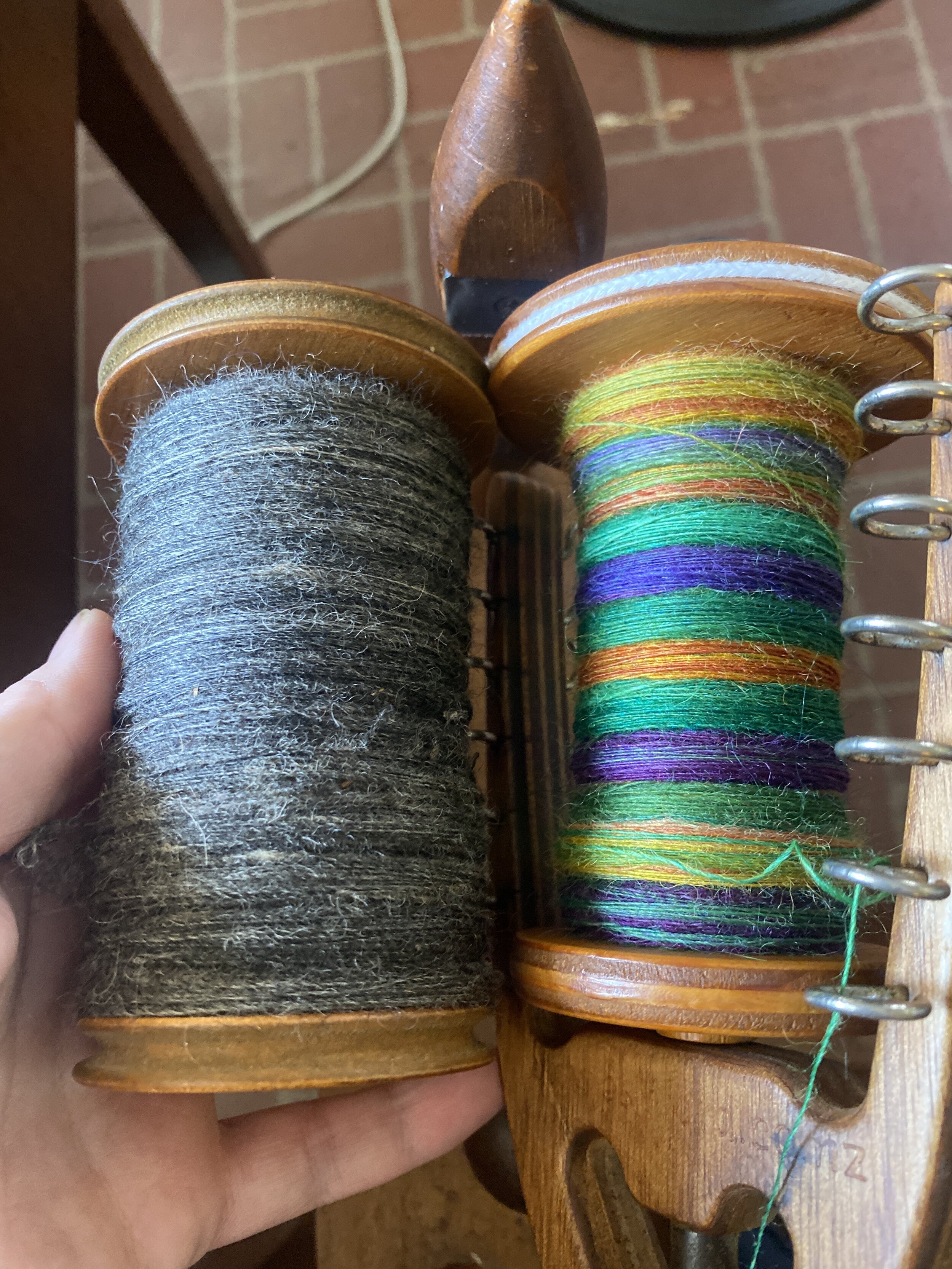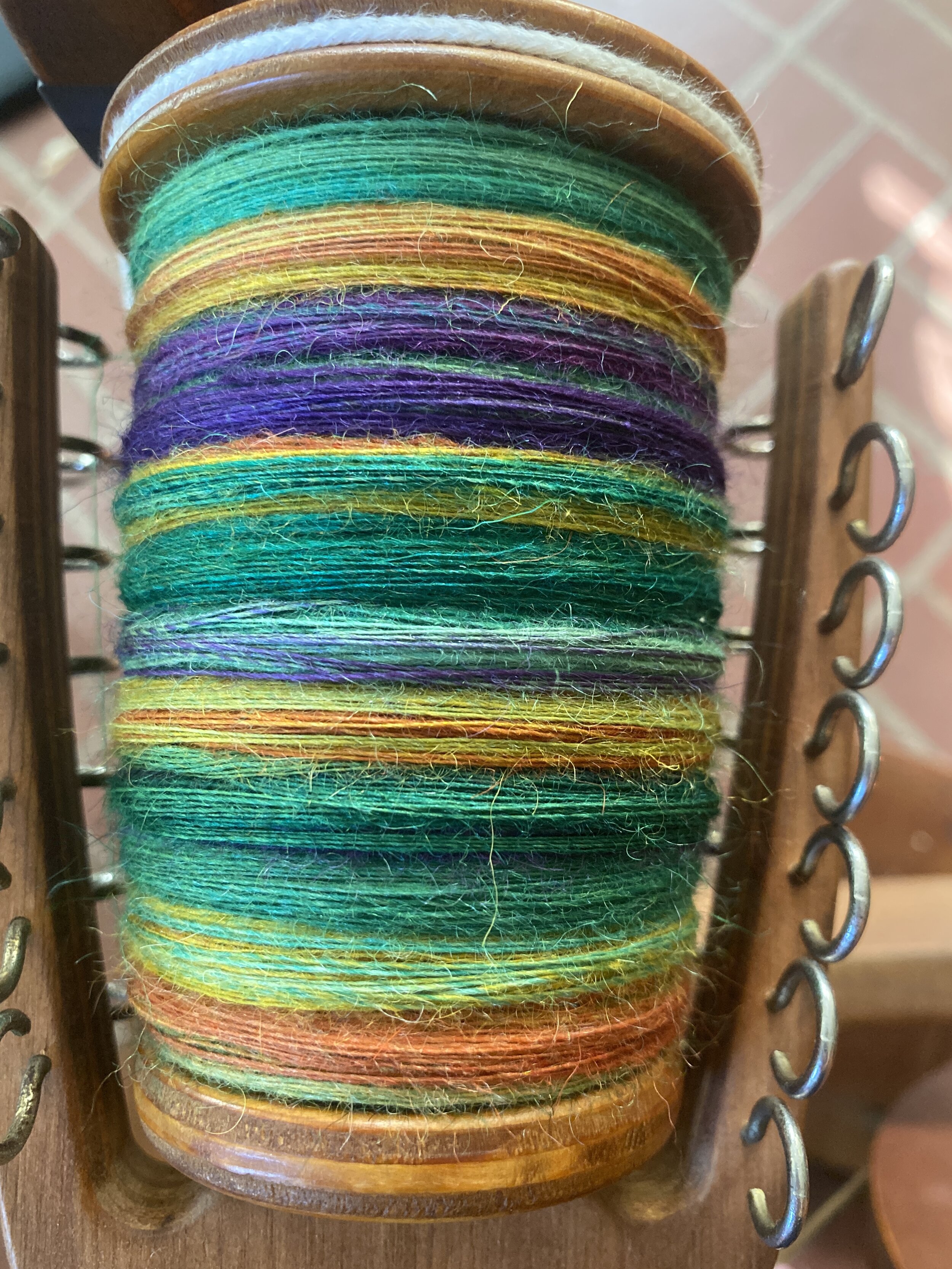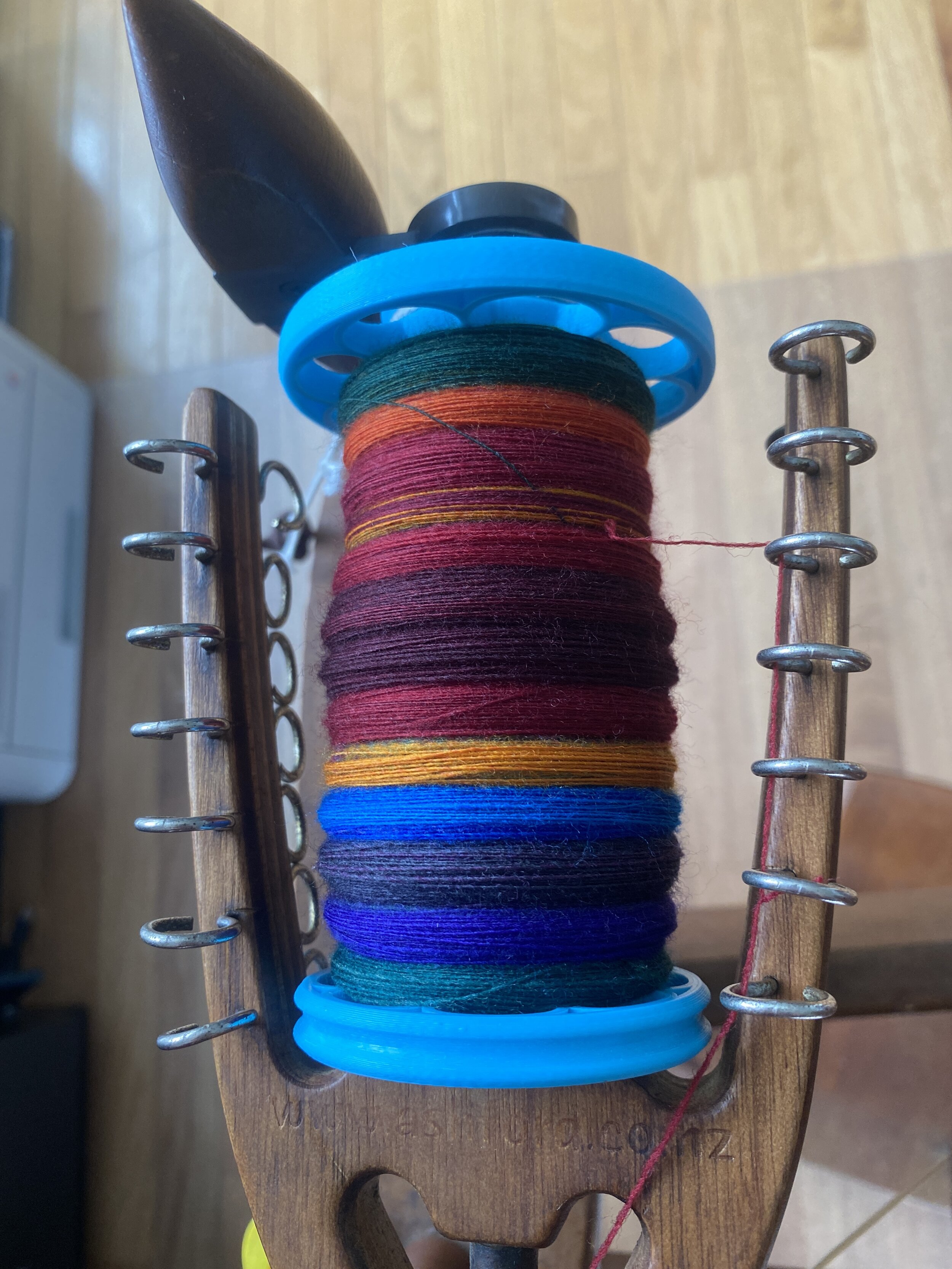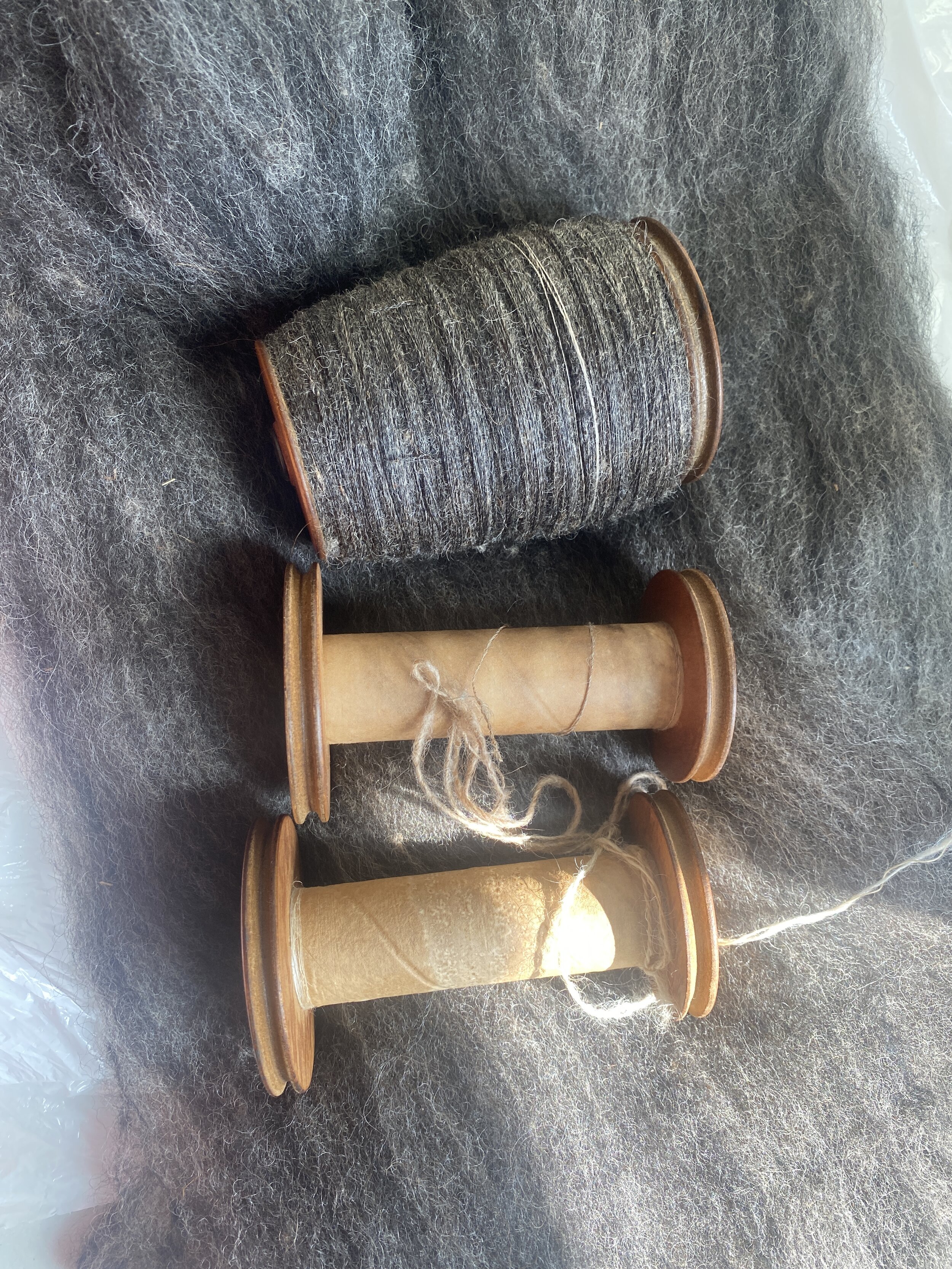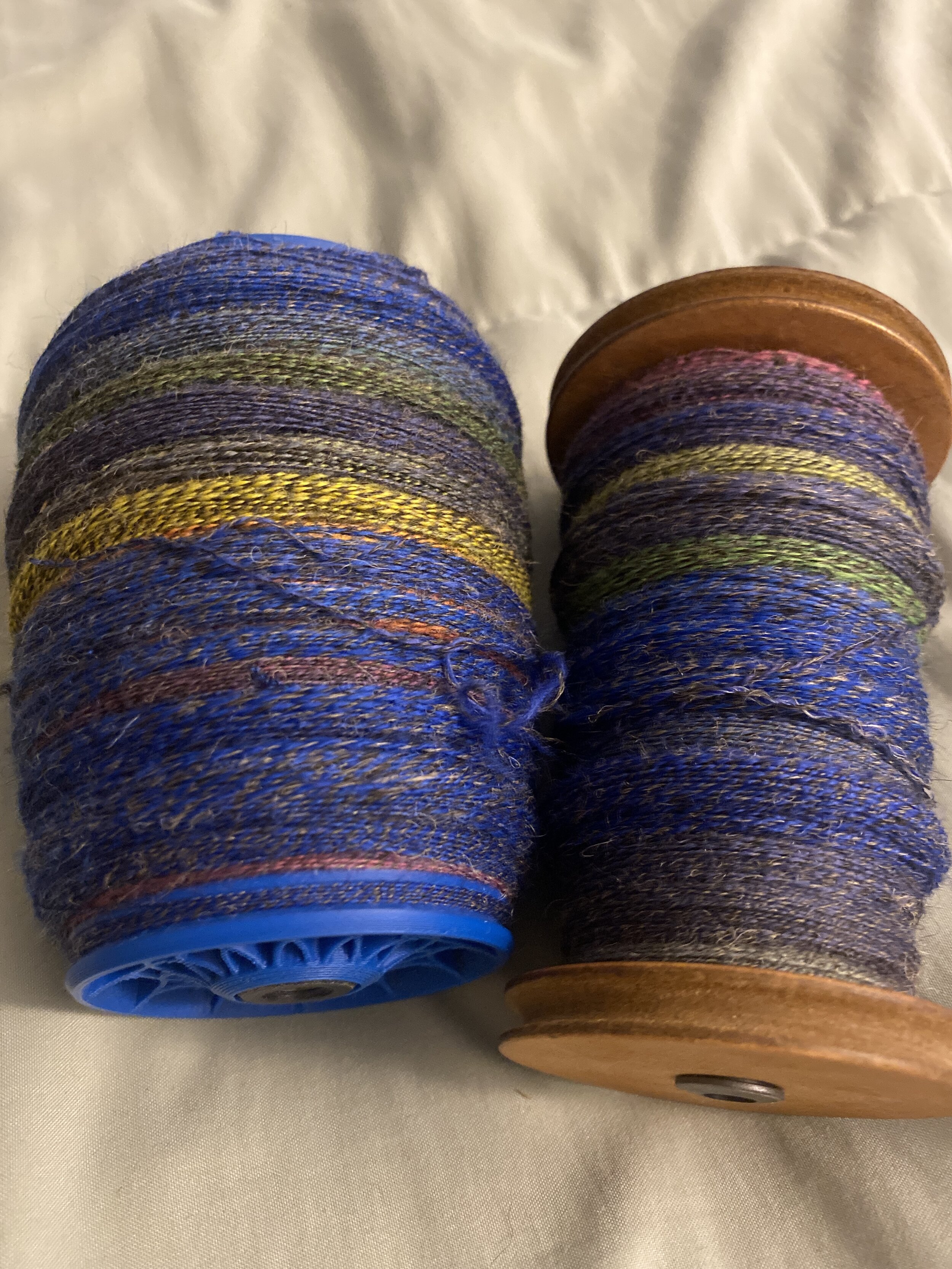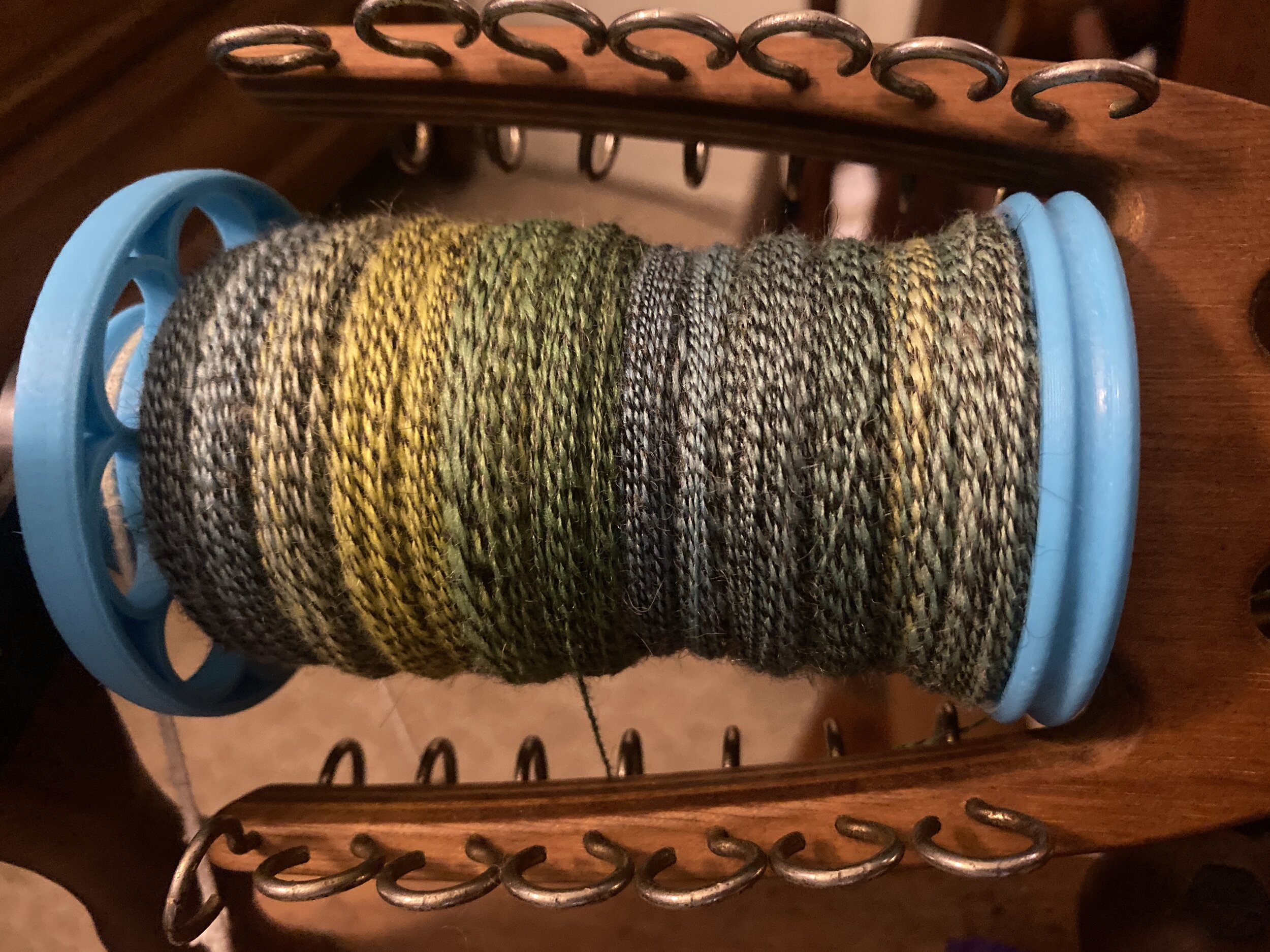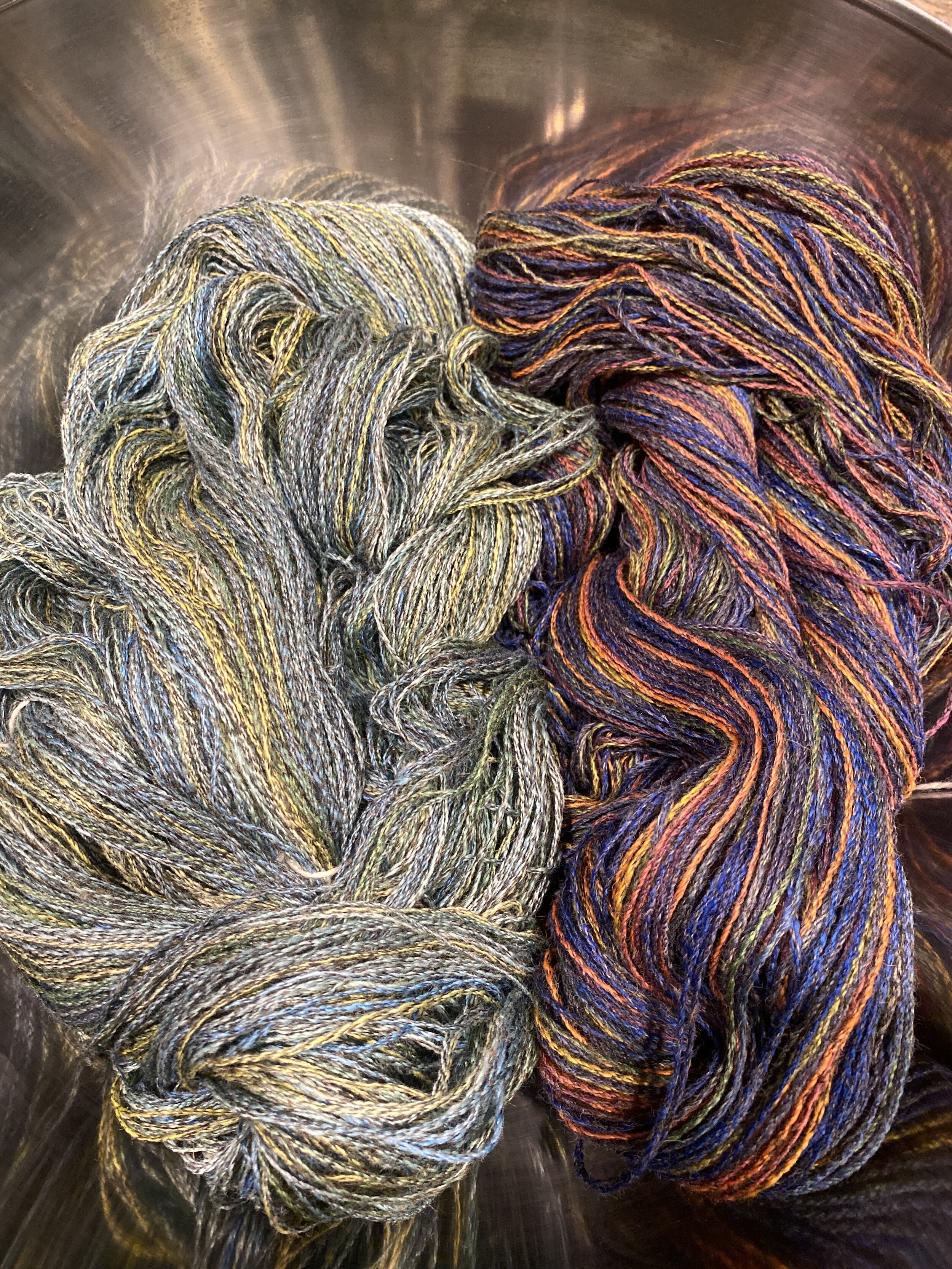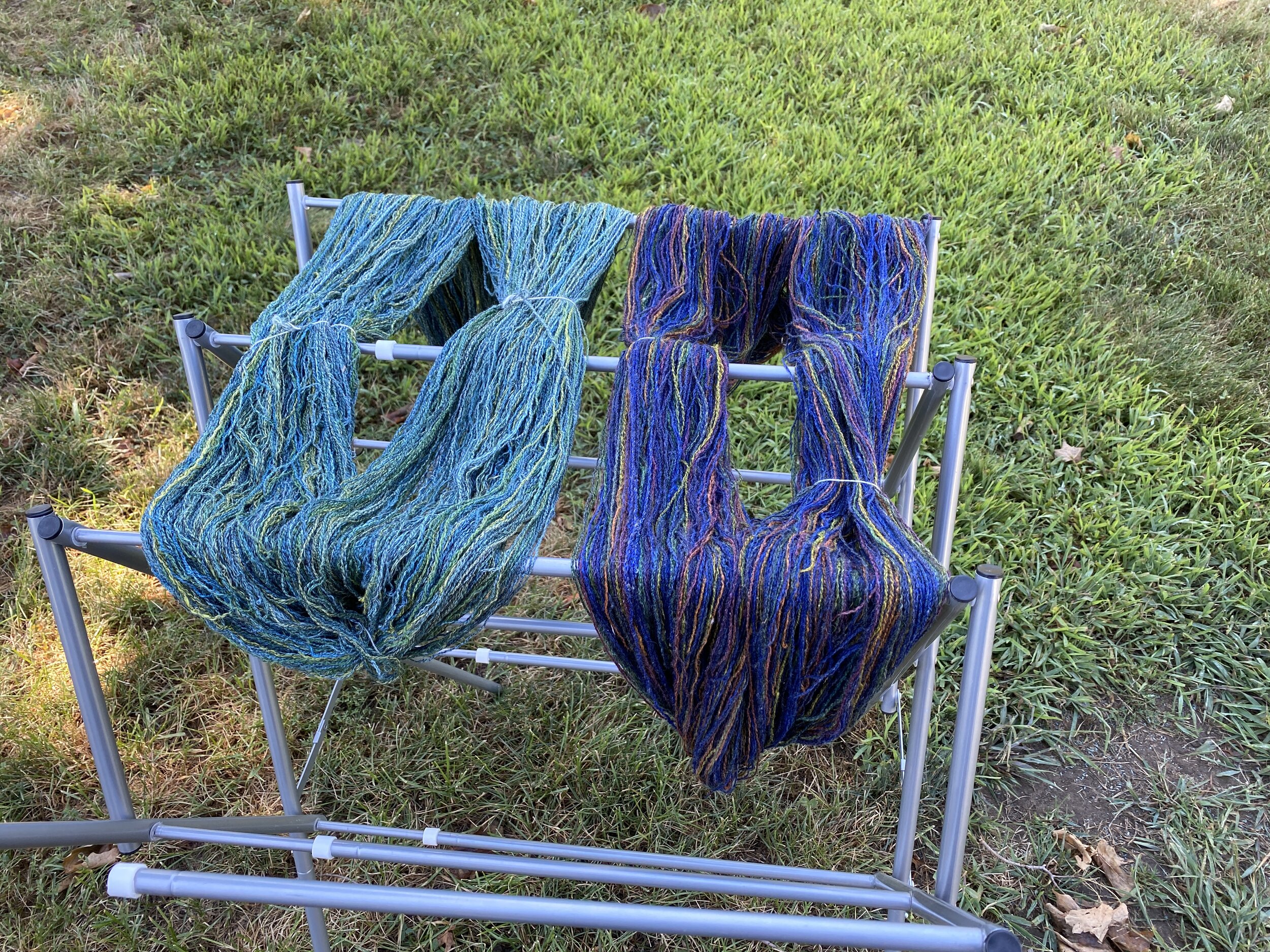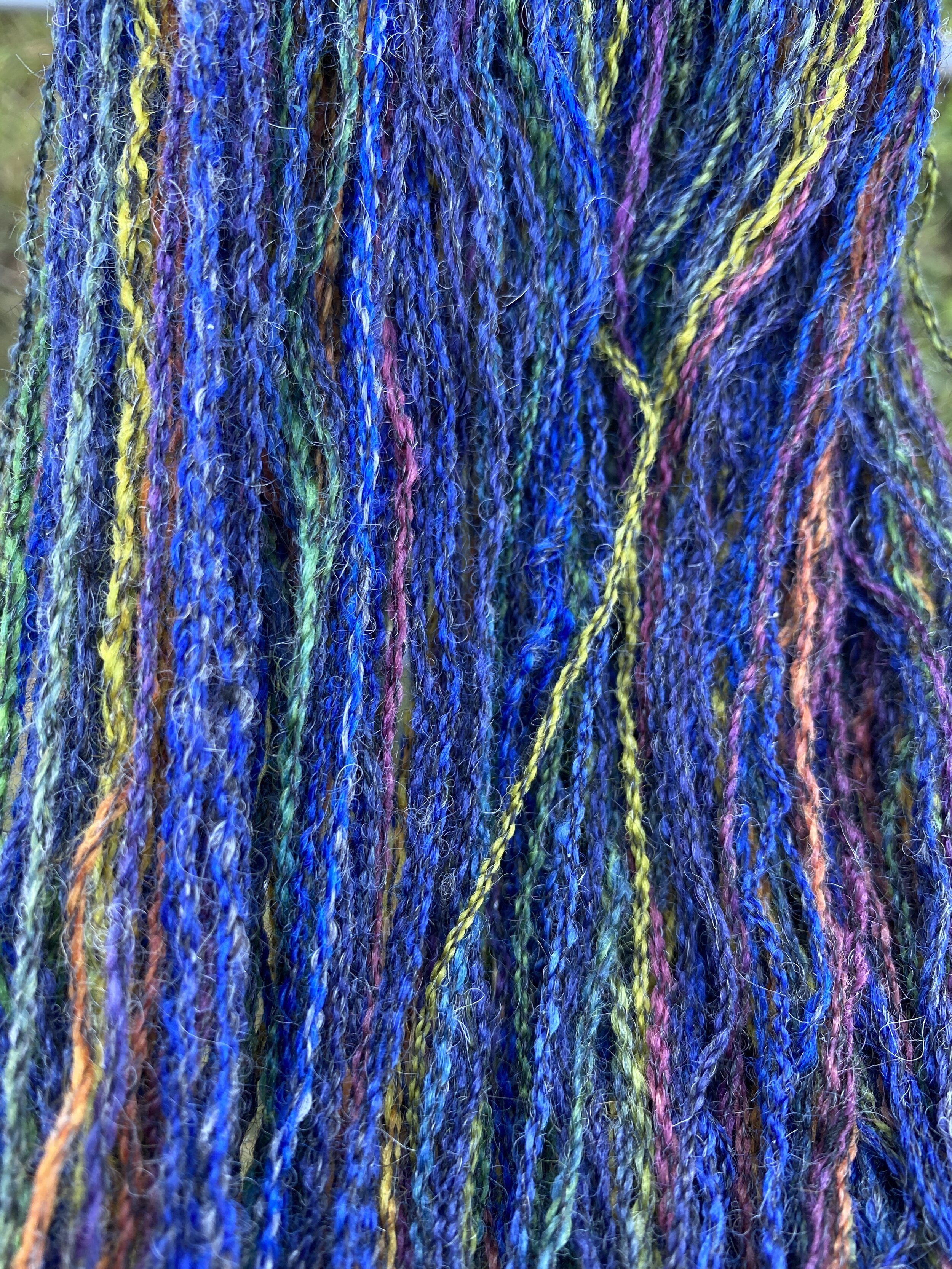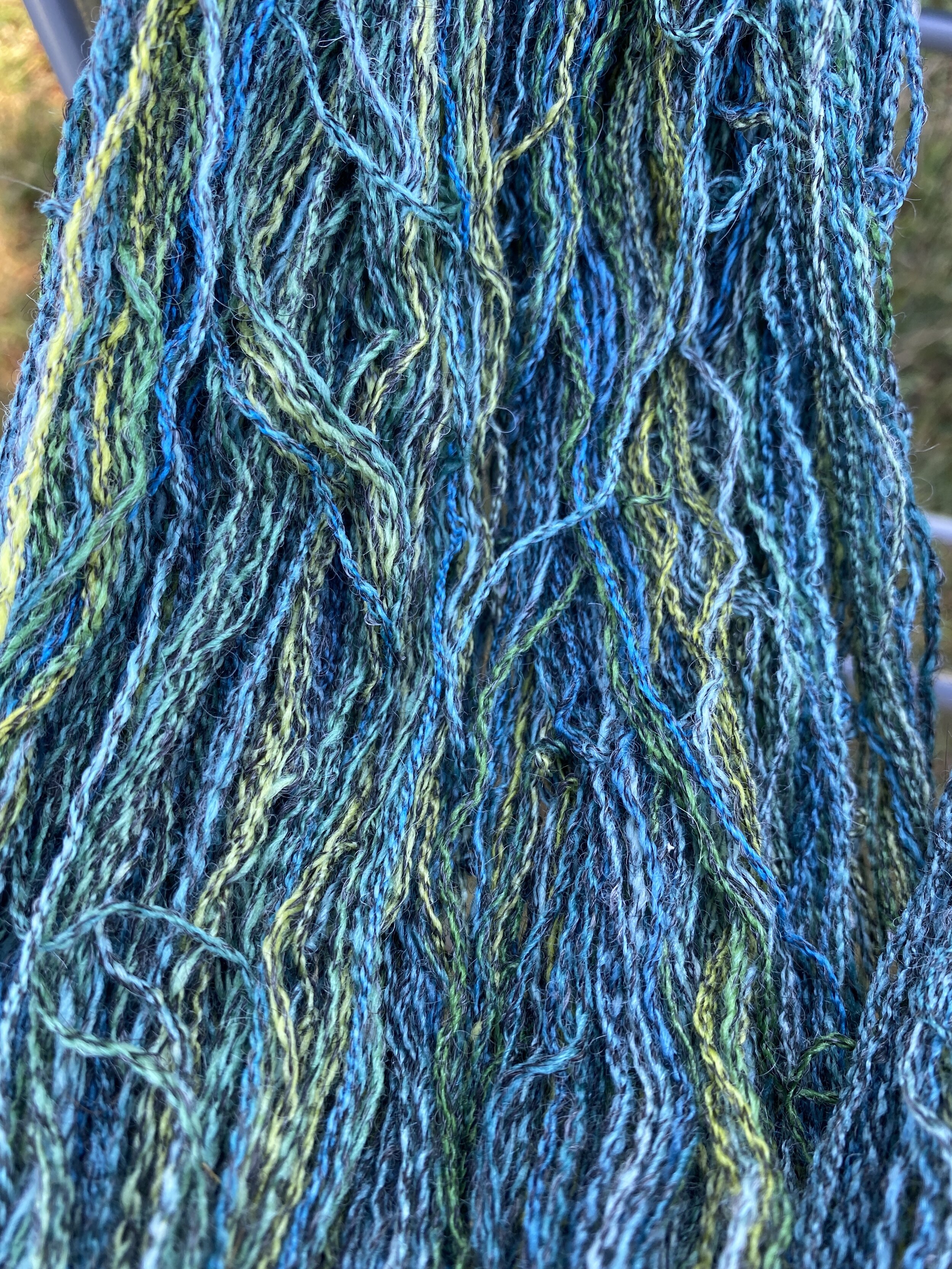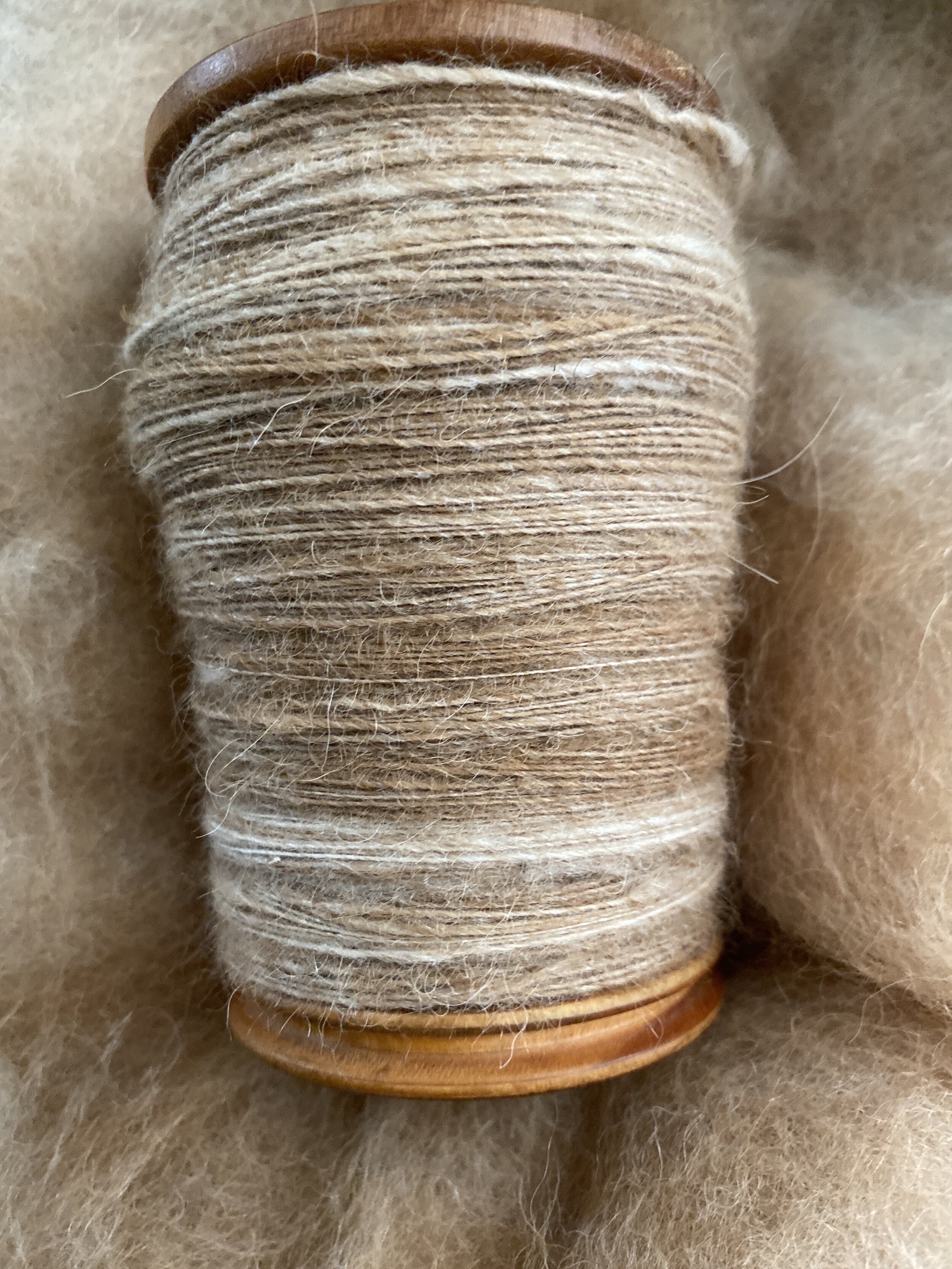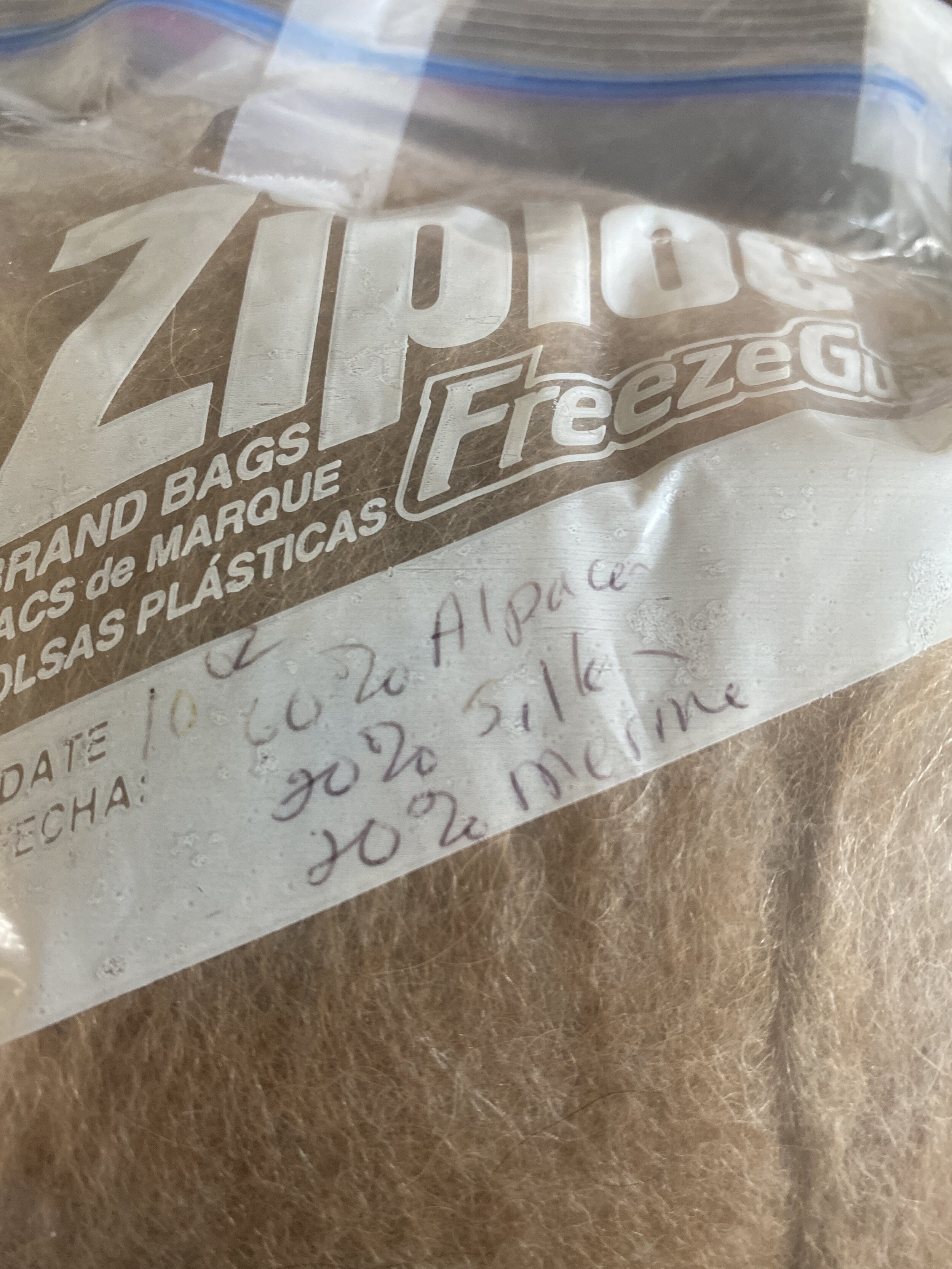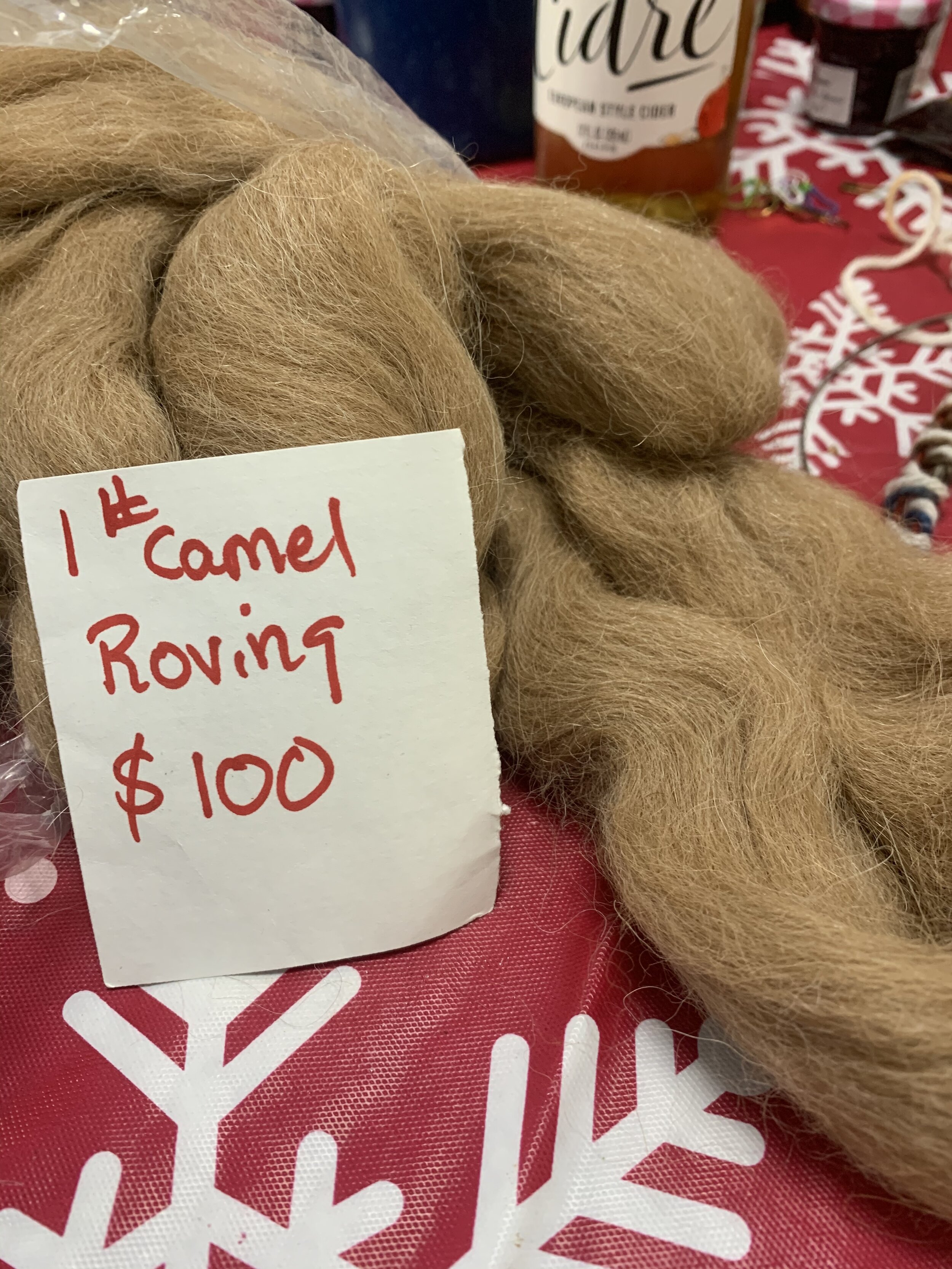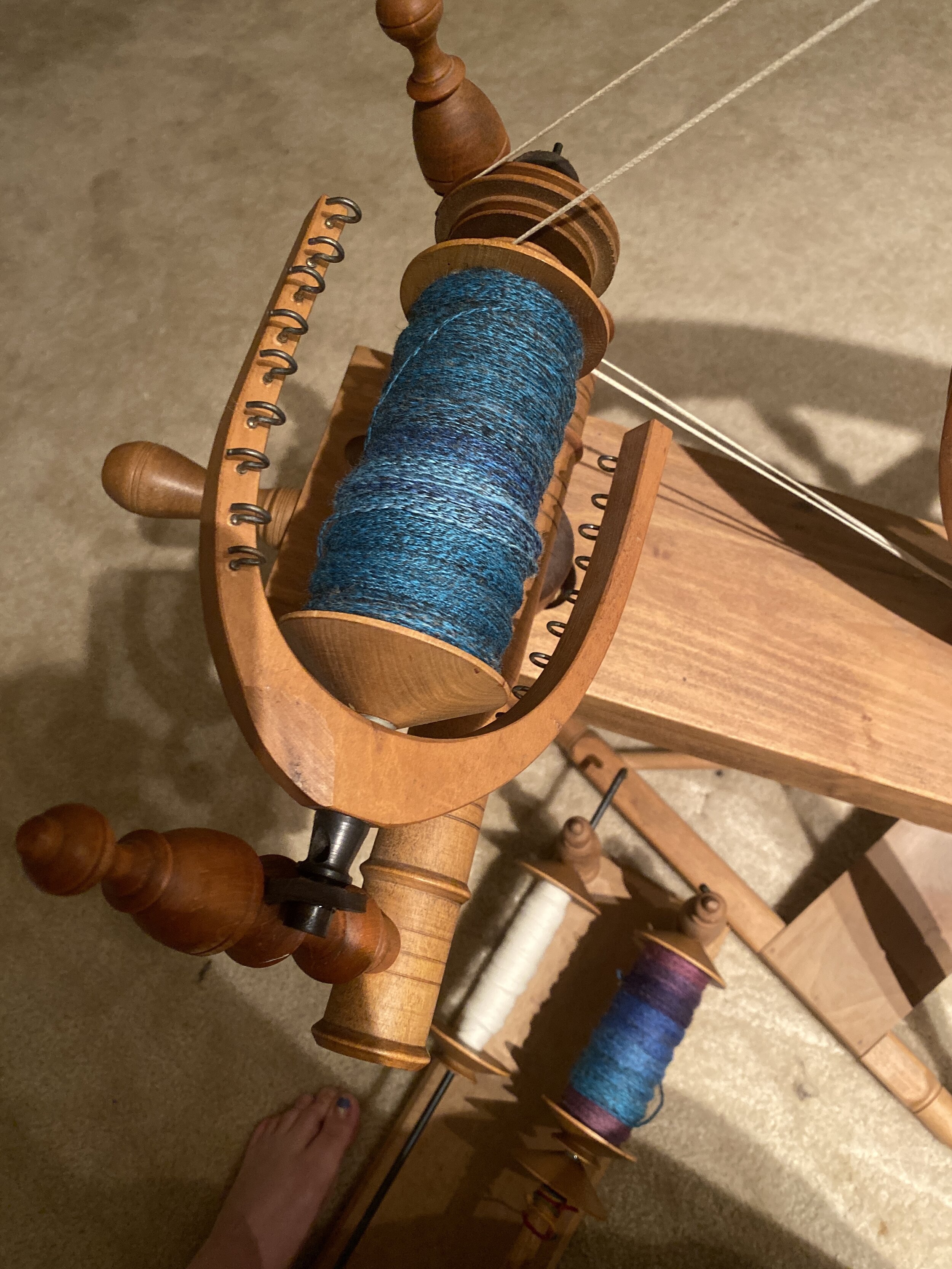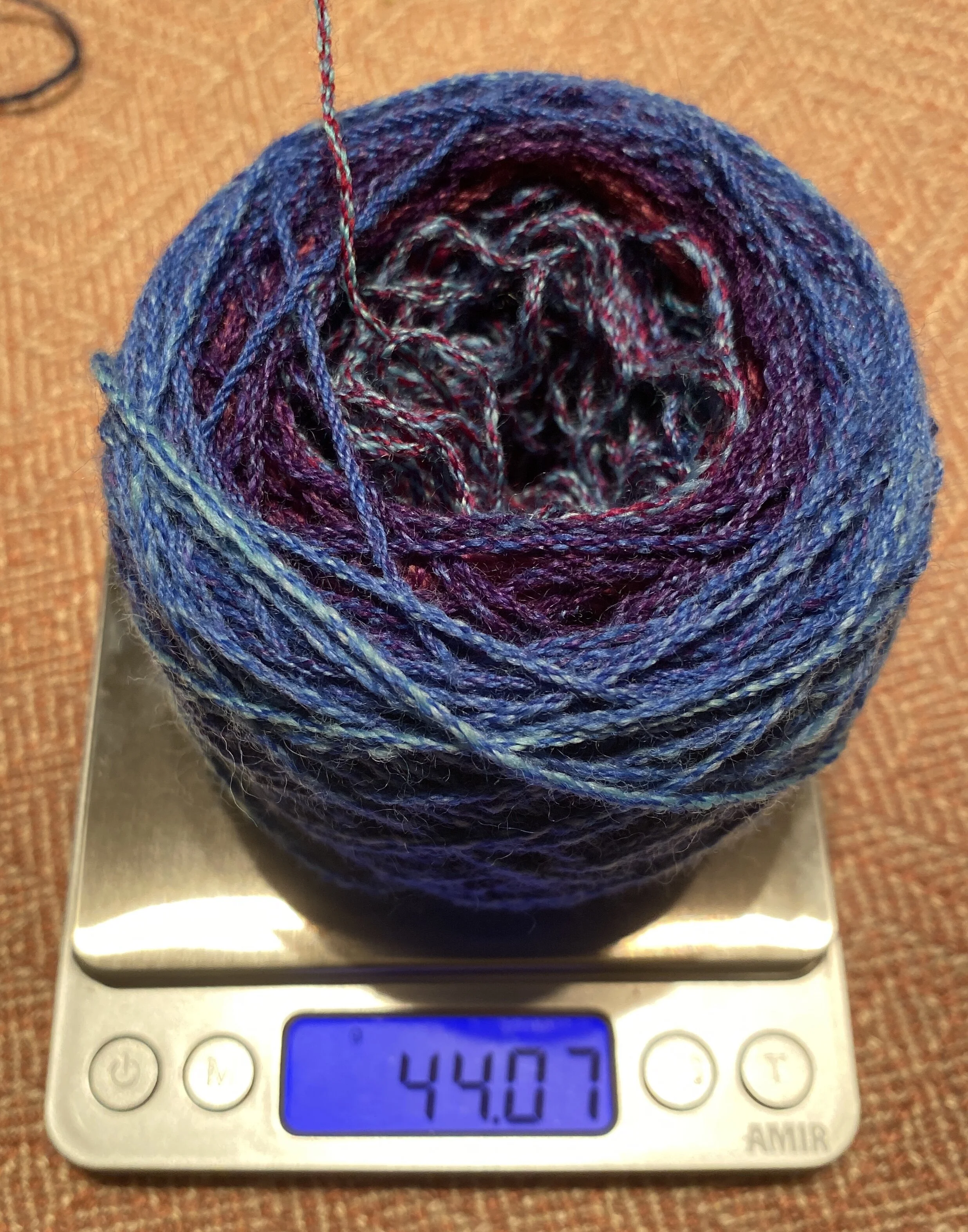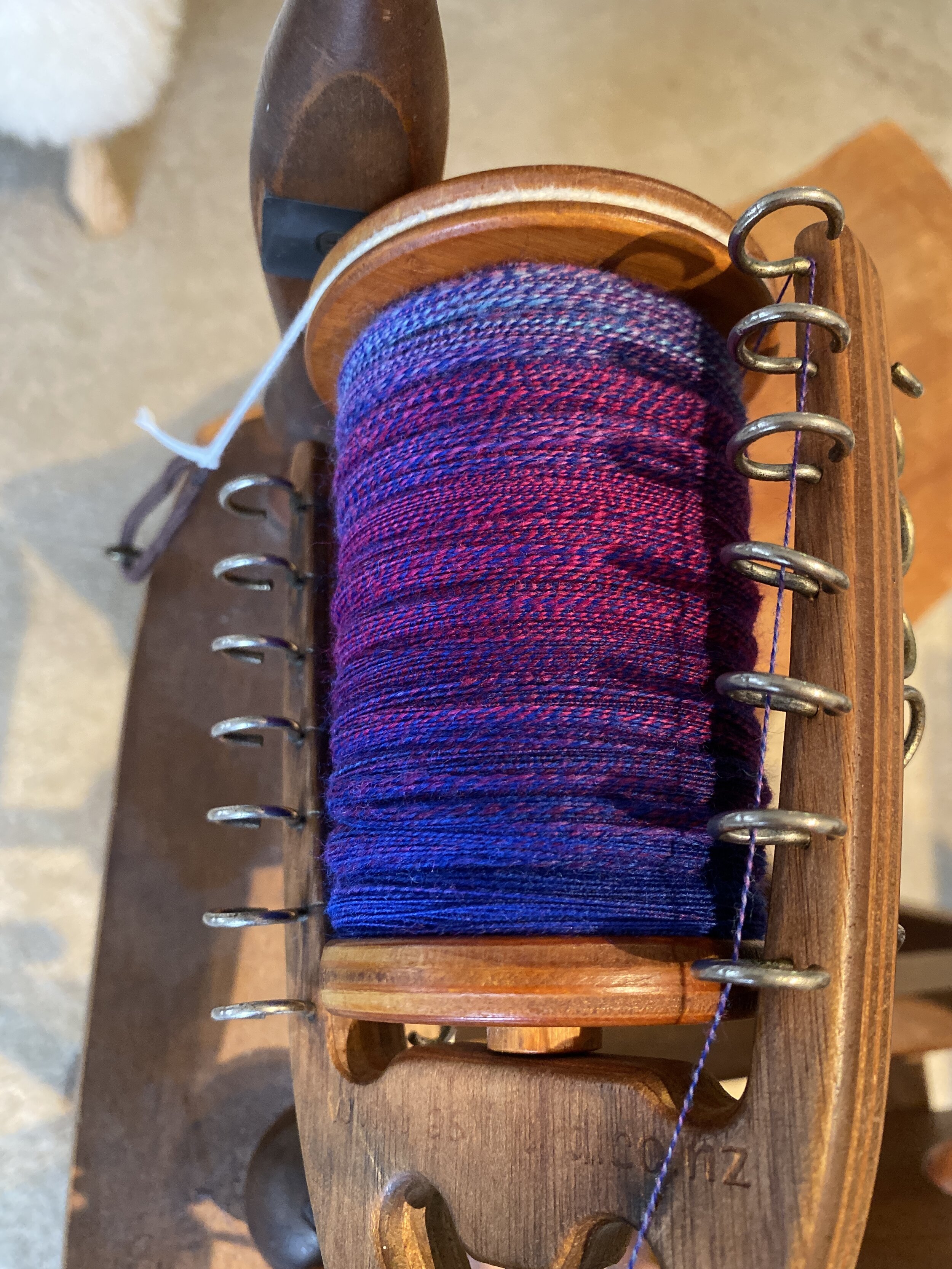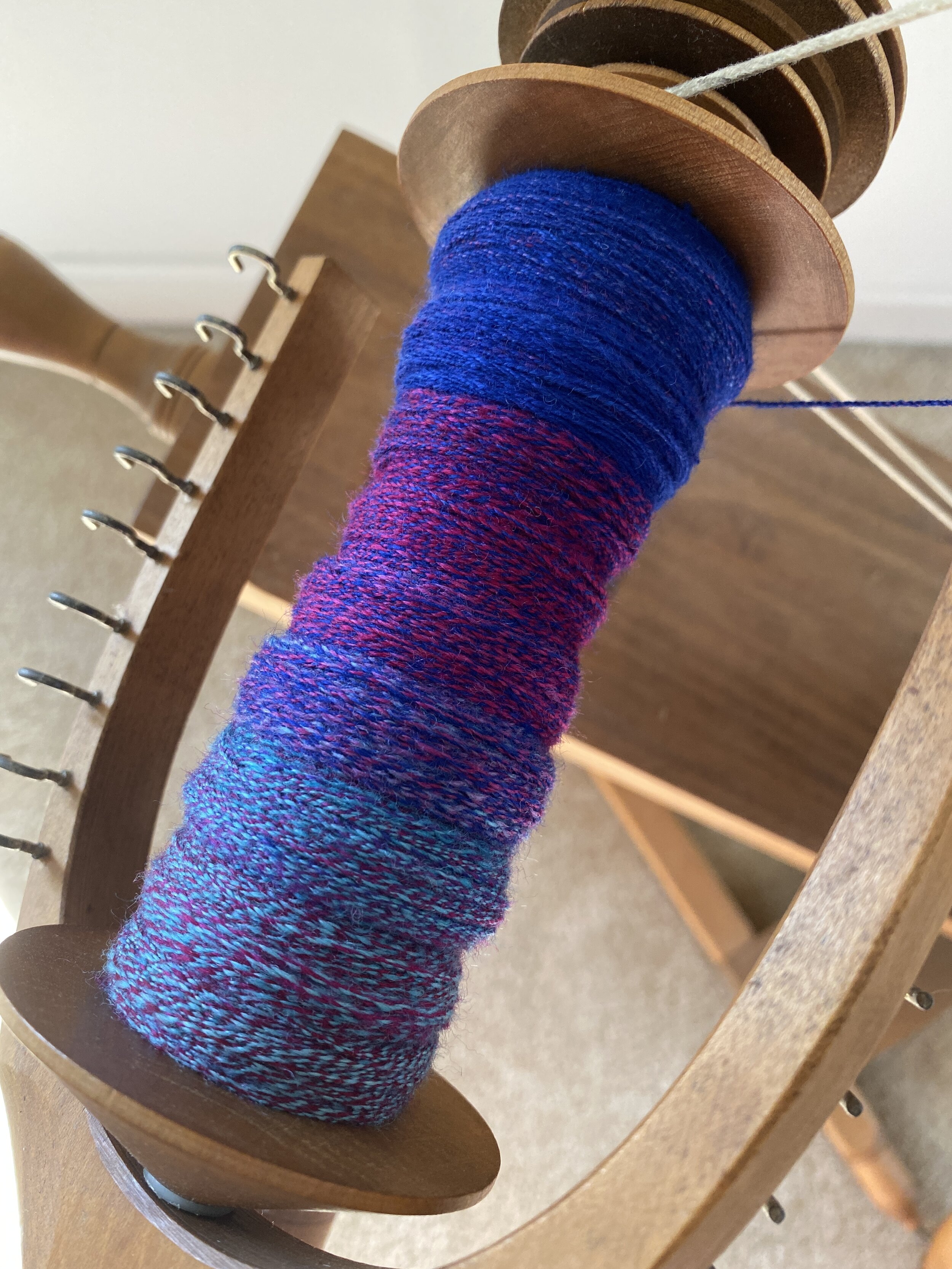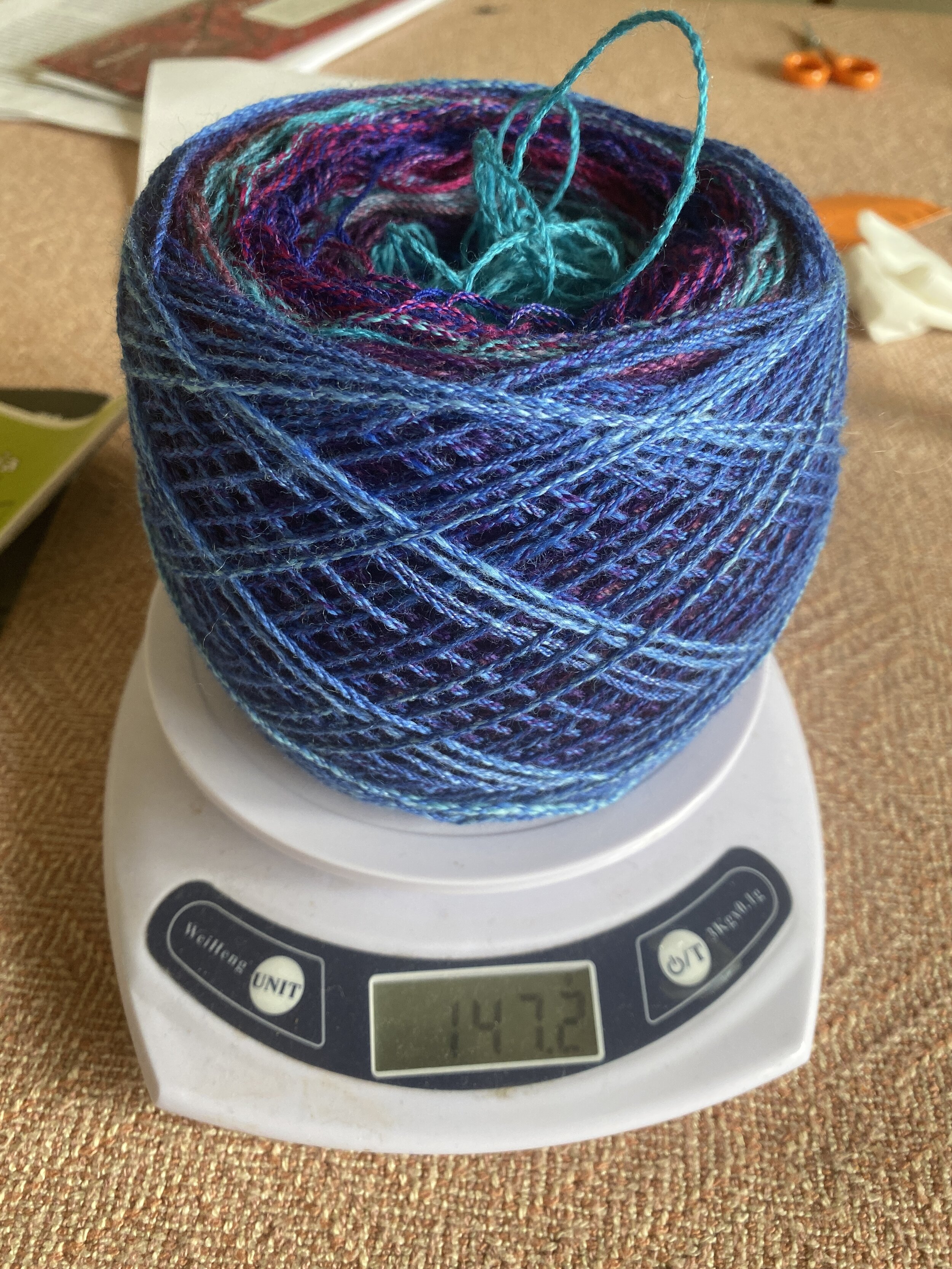This is one of the hazards of using handspun yarn, and it shows up clearly on socks. I really like using handspun for shawls, or in weaving, where any variations aren’t as critical. In a shawl you can claim it as a design feature if the bottom is thicker/thinner than the top, and in weaving you can alternate from different parts of the skein to minimize the impact of any variations. However, I knit socks. It’s in the name of the website. So, if I want to actually use my yarn instead of just watching it accumulate, I should spin for socks. And I need to work on my consistency.
Otherwise, I’m really happy with this pair. I love the colors, particularly the muted rainbow. The bright rainbow of the initial roving (colorway ‘cluster of grapes’ by ThreeWatersFarm, hence the sock name) was also beautiful, but I couldn’t see myself wearing those colors. Petting them, enjoying playing with them, yes, but wearing them? I also love the texture of this finished yarn, and the depth that adding that grey ply added. (For those who don’t hang on my every blog post, this is a six ply handspun where half is a brightly colored roving, and the other half is a grey blend of shetland wool, alpaca and nylon. The two singles were plied, and then I did a three-ply cable thing to make the overall six ply yarn.) I think the yarn does a great job of providing enough visual interest of its own, without a complicated pattern-I just love how the foot looks. I have enough yarn left for a short little anklet pair, so that’ll be next!

